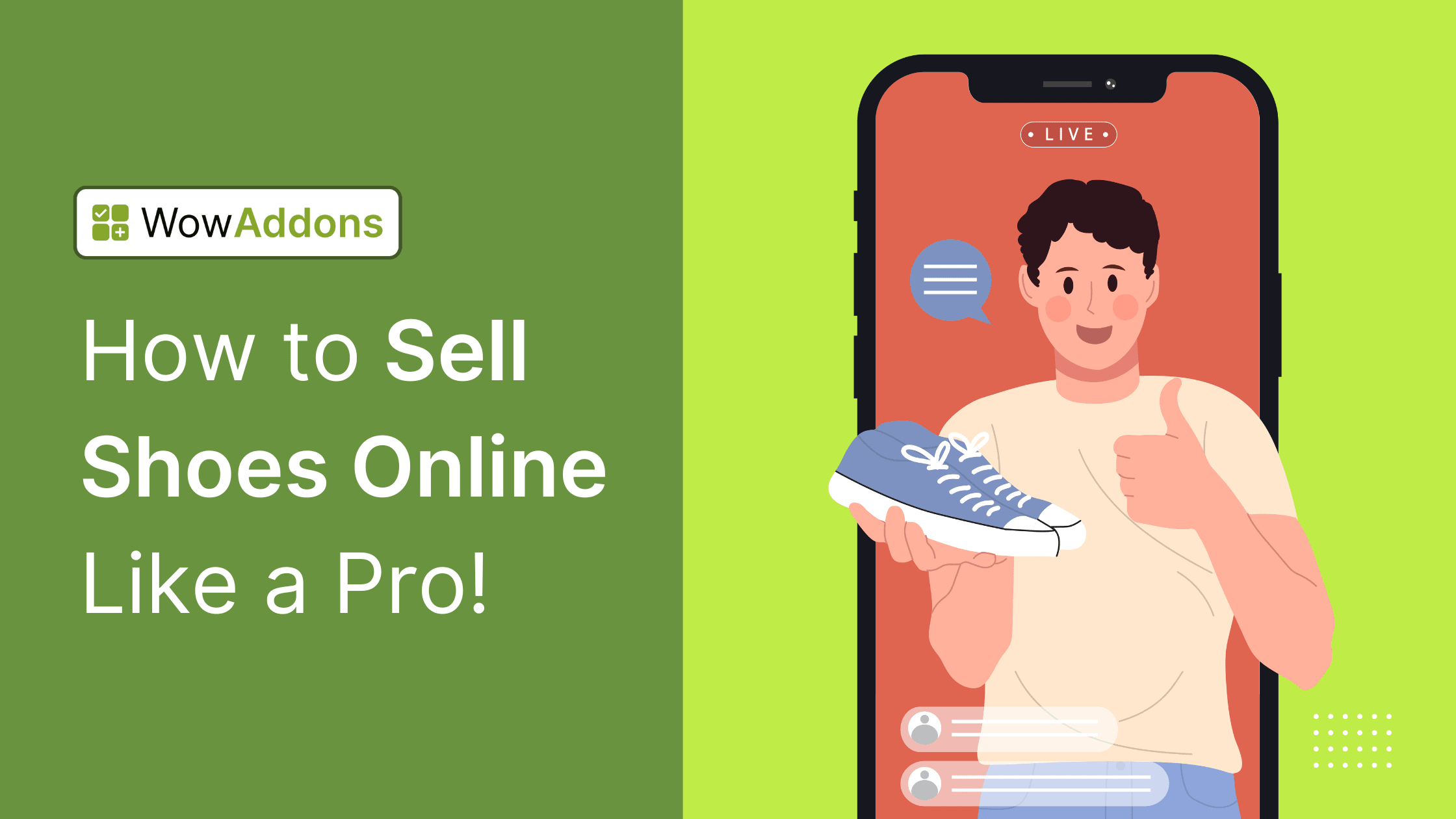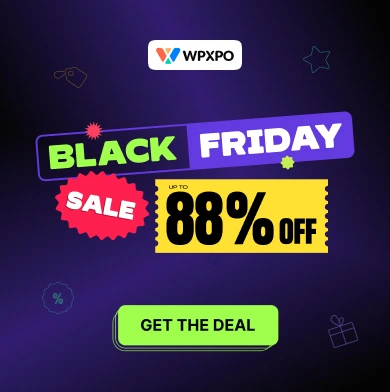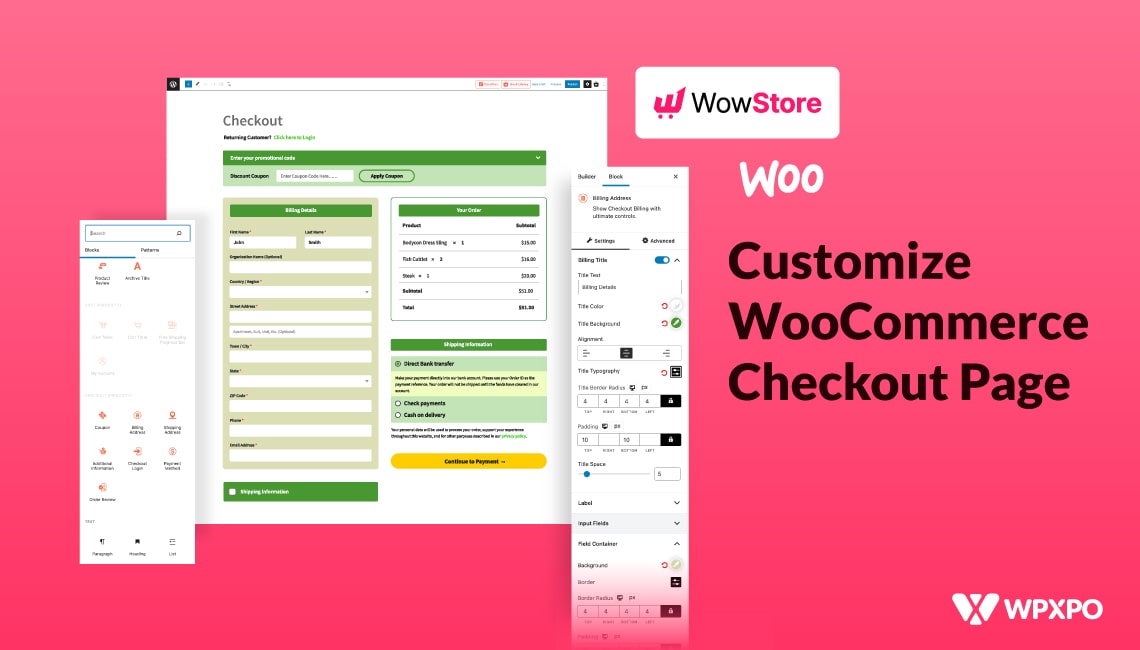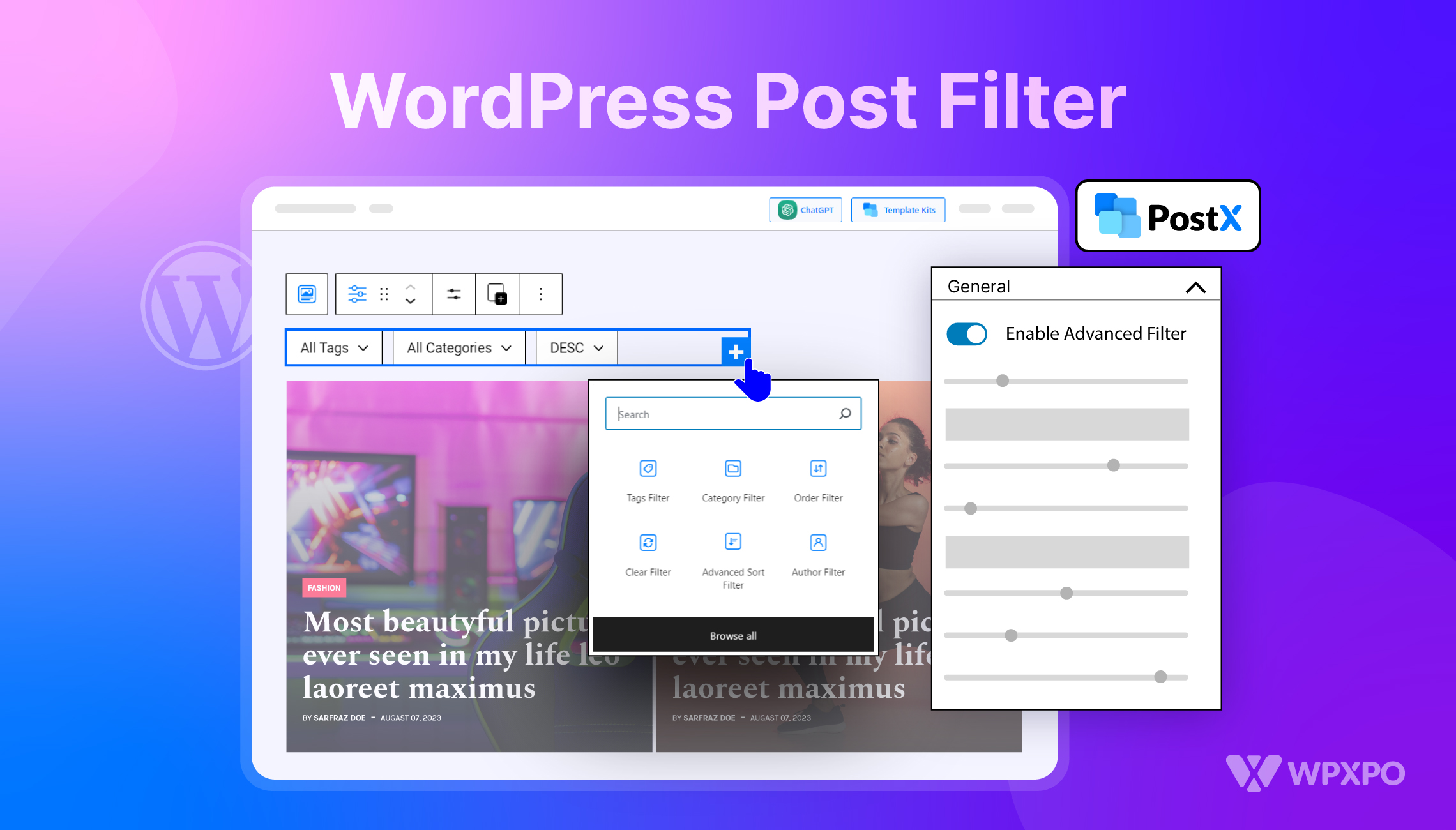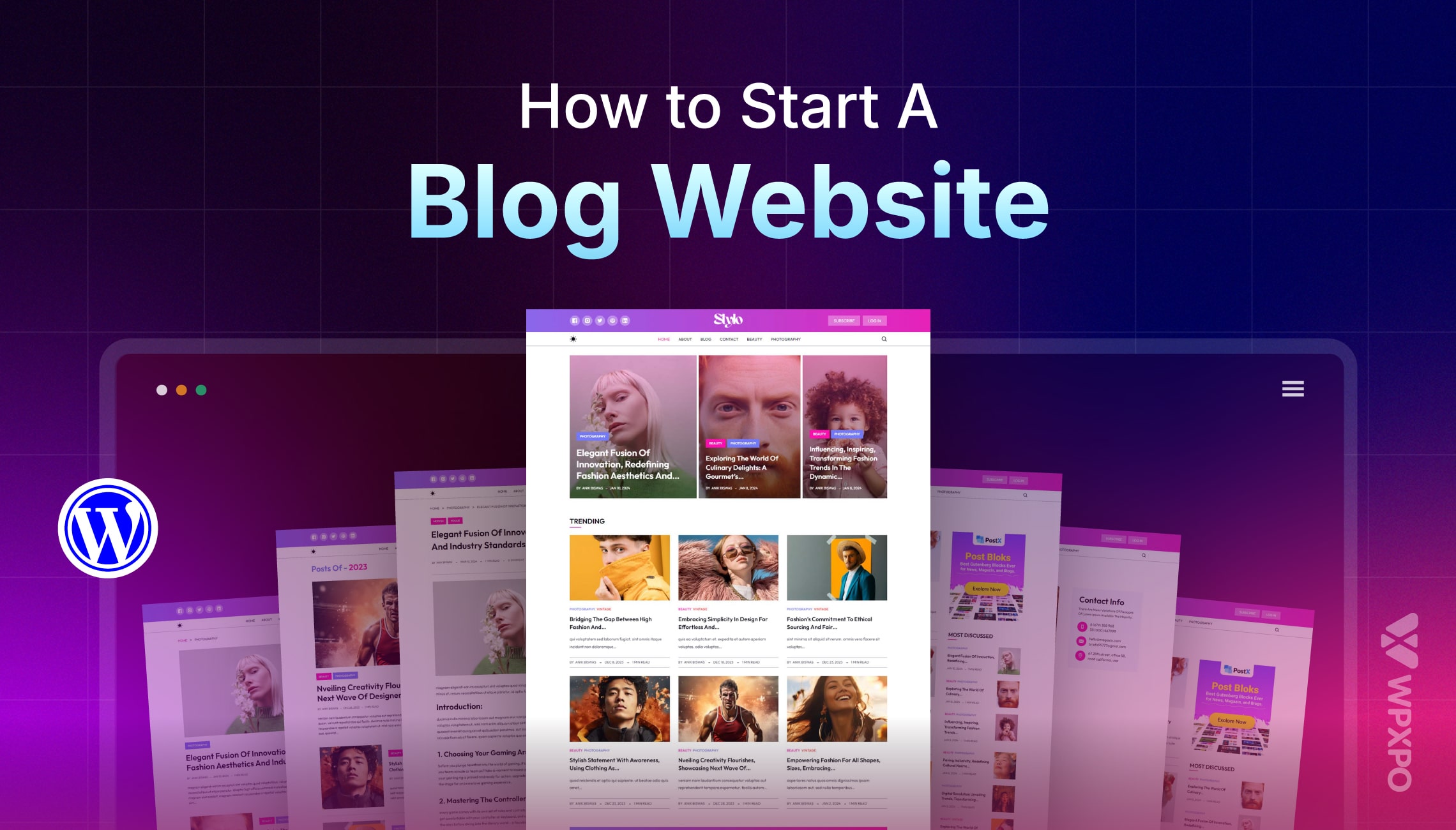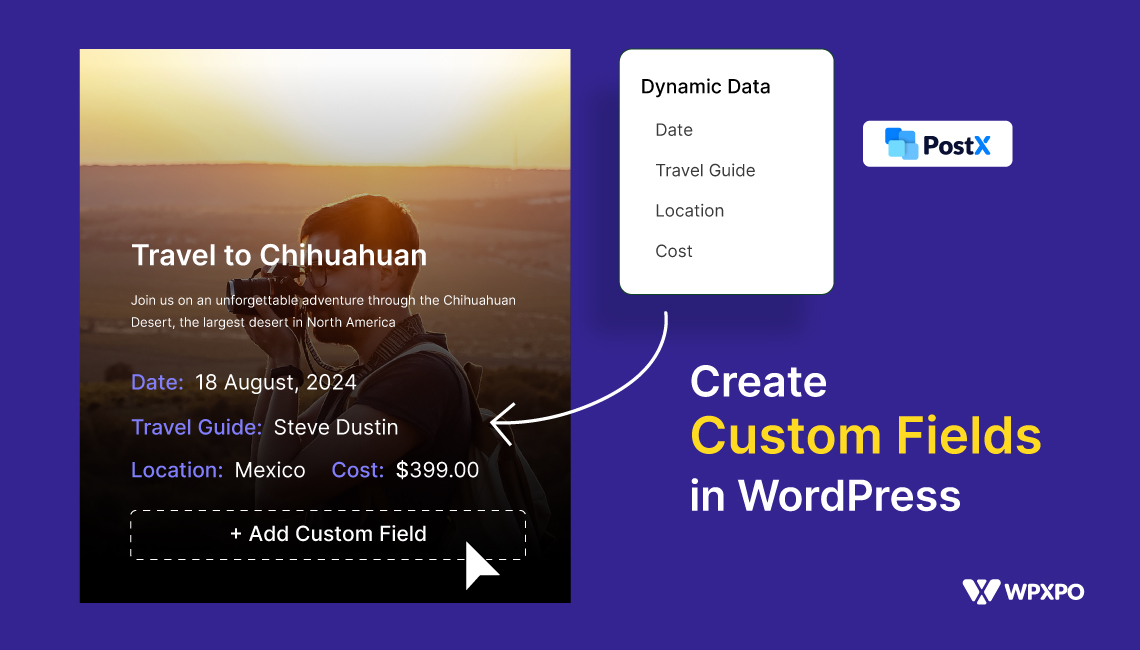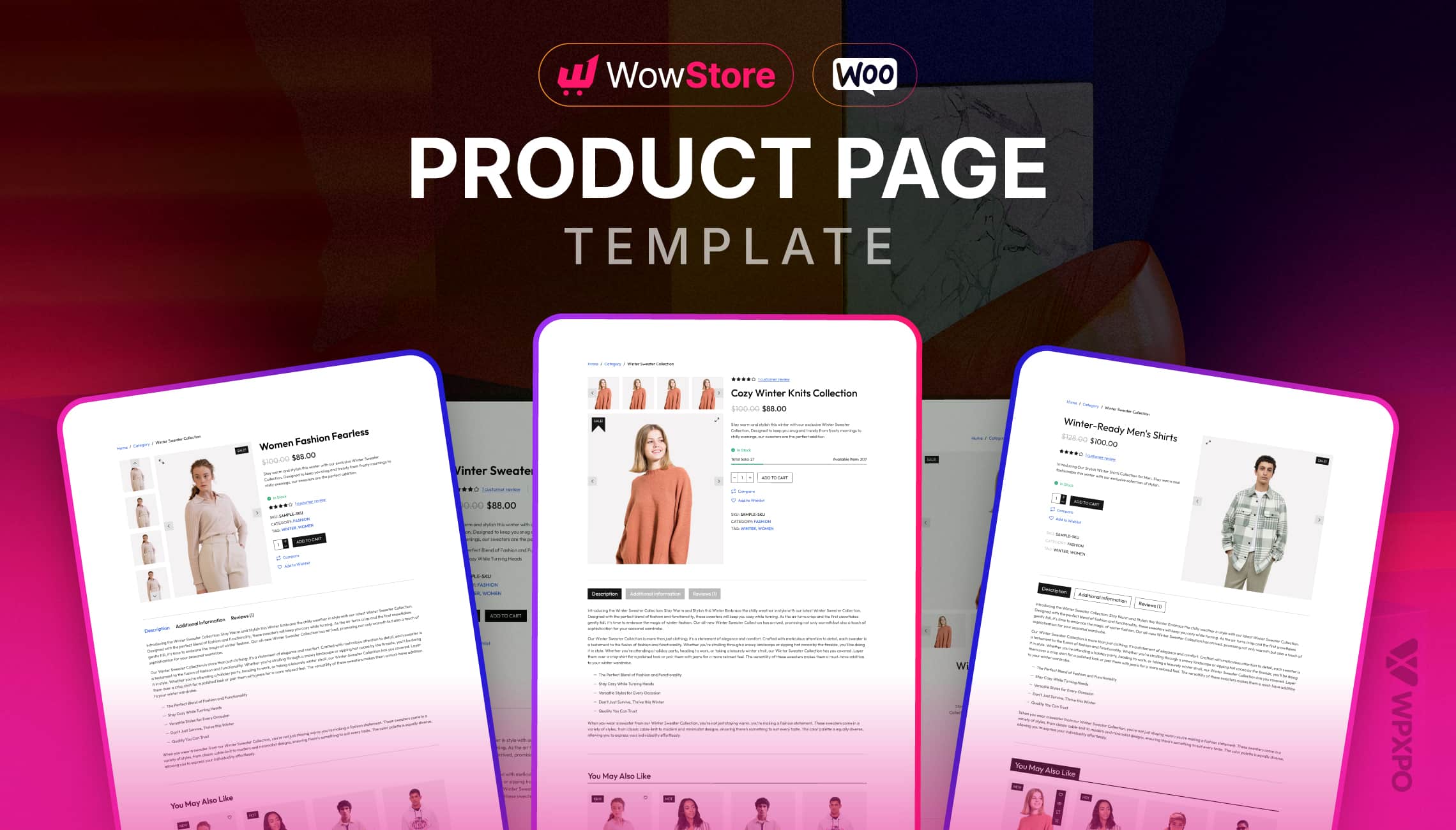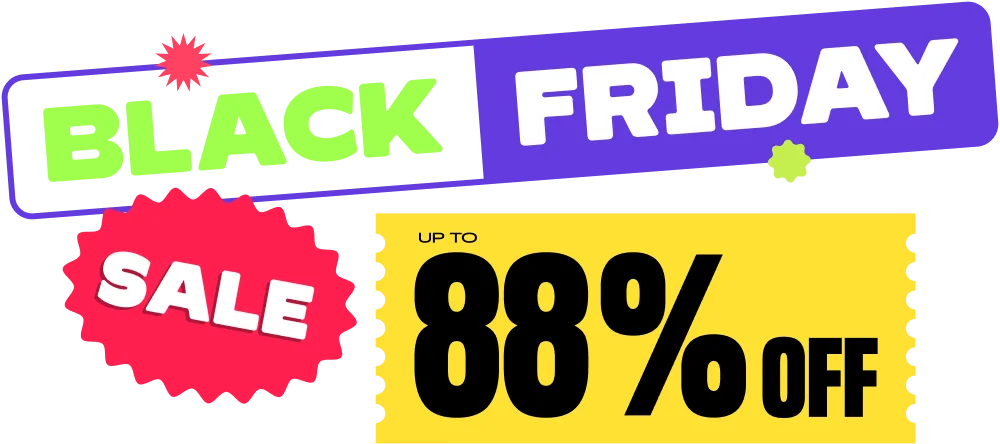According to Grand View Research, the global e-commerce footwear market is projected to reach $156.73 billion by 2028, growing at a compound annual growth rate (CAGR) of 6.8%, making this the perfect time to step into the e-commerce shoe game.
Many aspiring entrepreneurs like you hesitate because they’re overwhelmed by platform choices, uncertain about which shoes to sell, or lack proven strategies to stand out in a competitive marketplace.
As a marketing professional, I’ve helped hundreds of newcomers navigate these exact challenges: platform selection -> personalization -> advanced conversion tactics. And I’m here to guide you through the process with battle-tested solutions.
In this comprehensive guide, you’ll discover why WooCommerce stands out as the ideal platform for shoe sellers, especially when enhanced with product personalization features that today’s shoppers demand.
Let’s learn how to sell shoes online successfully!
👟 Best Shoes to Sell Online for Beginners
As a beginner, you should begin with a carefully curated selection of shoes. Focus on options that offer:
- Affordable pricing (lower initial investment)
- Efficient shipping (fast and cost-effective delivery)
- Year-round demand (consistent sales potential)
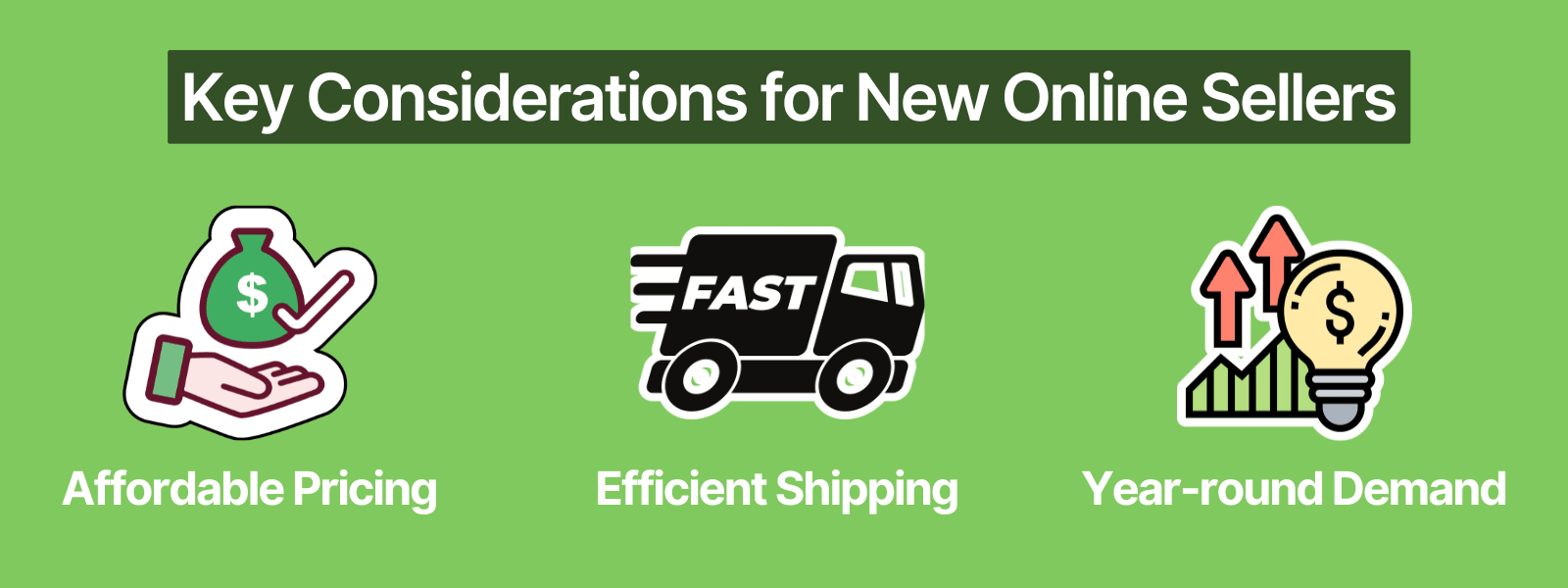
Athletic/Running Shoes: These shoes are in high demand year-round and have a lower seasonality impact. The users of these shoes are regular buyers, so you’ll have a consistent demand.
Casual Shoes: Sneakers, loafers, slip-ons, and slippers are popular and have steady demand. Sneakers, in particular, are a top seller due to their widespread use and fashion appeal.
Women’s Fashion Flats: These shoes will never get old, and selling these shoes also brings you a good profit margin. They are easy to ship and need less size complexity than heeled shoes.
Children’s Shoes: Parents regularly purchase as children grow. If you start selling children’s shoes, you don’t need to have a higher inventory investment. You just need to store high-quality and well-designed shoes. And there is an opportunity for repeat customers.
😩 Common Difficulties You Might Face When Selling Shoes Online
Selling shoes online comes with a unique set of hurdles that can trip up even experienced retailers. The key to success is addressing these pain points with creative solutions. Here I’ve listed some common challenges of selling shoes online as a beginner:
📏 Fit and Sizing Issues
The biggest headache in online shoe sales is getting the size right. Without trying shoes on, customers often end up with ill-fitting footwear. This leads to high return rates (often 30-40% for footwear!) Customer frustrates when the shoes don’t fit as expected.
These might happen even for sizing inconsistencies between brands and even within the same brand
🖥️ Product Visualization Challenges
Shoes are very tactile products, and customers want to see them from every angle. The common way of capturing images often don’t fully convey the true color, texture, or design details. Also, customers can’t feel the material quality or weight of the shoe.
So It’s hard to show how shoes look when worn with different outfits.
⚔️ Intense Competition
The online shoe market is incredibly crowded. You’re even competing with giant marketplaces like Amazon and Zappos. Brand-direct sites like Nike and Adidas dominate their categories and new direct-to-consumer brands pop up constantly with innovative marketing.
🤯 Inventory Management Nightmares
Shoes require extensive inventory because of the size/color combinations. Each style might need 7-14 sizes in multiple colors. So, predicting which sizes will sell is surprisingly difficult and storing this inventory ties up significant capital.
↩️ Return Processing Headaches
Returns are expensive! It can even eat your profits. Also you need human efforts to inspection and reprocessing of returned shoes. And also, some returned shoes can’t be resold as new.
🤝 Building Customer Trust
When people can’t try before they buy, trust becomes crucial. New shoe stores struggle to establish credibility. They intially don’t have enought reviews and social proofs. So ,customers worry about authenticity of getting quality shoes.
🔄 Fast Fashion Trends
The footwear industry is highly influenced by rapidly changing fashion trends. Retailers must be agile in updating their offerings and marketing to keep up with consumer demand. Failure to adapt can result in unsold inventory and lost relevance in the market.
🤩 How WowAddons Handles Some Major Difficulties
WowAddons, an advanced prodcut options plugin, tackles the complexities of online shoe sales by providing advanced product customization features.
For instance, you can use the Image Swatches and Color Swatches addons to offer customers a variety of visual options for their shoes. These addons allow customers to see exactly what they are getting, which can increase satisfaction and reduce returns.
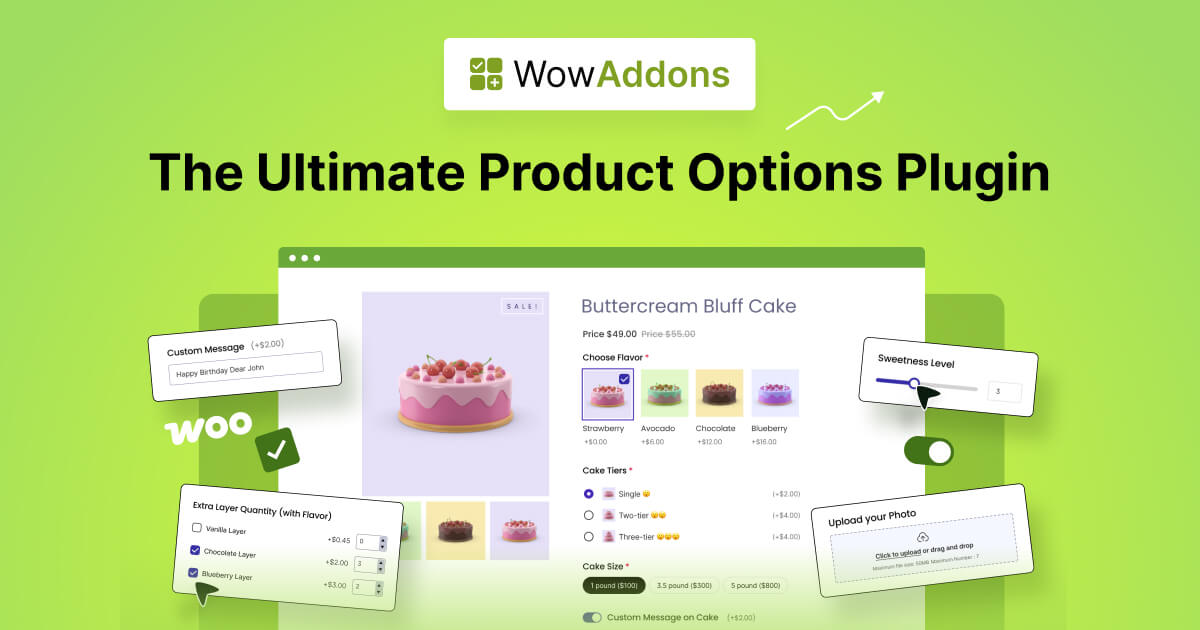
Choosing the Right Platforms to Sell Shoes Online
When you’re ready to start selling online, you’ve got several options: marketplaces like Amazon, social media platforms, or building your own website. While each approach has benefits, I’m a firm believer that creating your own ecommerce store is often the best choice. Here’s why:
🛠️ Build Your Own Store
Creating your own store might require a bit more upfront work, But the long-term benefits of ownership and control make it incomparable and well worth the initial investment. Here are some exceptional advatages you get only with your own store:
✅ Complete Control of Your Brand: With your own store, you control how your products are presented, your pricing strategy, and the entire customer experience from start to finish. No algorithm changes or platform rules to worry about!
✅ Build Direct Customer Relationships: When customers buy from your own site, you capture their information and can build lasting relationships. On marketplaces, those customers belong to the platform, not you.
✅ Higher Profit Margins: Marketplace fees can eat up 15-30% of your revenue. With your own store, you’ll pay much lower transaction fees, keeping more of what you earn.
✅ Growth Flexibility: As your business evolves, your own website can grow with you. Add features, change designs, or pivot your business model without platform restrictions.
✅ Professional Credibility: People want to trust the seller, including you and me. And this starts with your store, not from other platforms. When people buy from other platforms, they don’t buy on your trust; they buy on the platform’s trust. You are just a supplier.
But a dedicated website gives your brand legitimacy that’s hard to achieve when you’re just one of thousands of sellers on a marketplace.
📣 Sell on Social Media
Let’s be honest – shoes are meant to be seen! Visual platforms where people already hang out looking for style inspiration are goldmines for footwear sellers.
Instagram is basically a virtual shoe store these days. With shopping tags, Stories, and Reels, you can showcase your shoes in action and link directly to purchase pages. Plus, those gorgeous flat-lays and lifestyle shots of your shoes can stop scrollers in their tracks!
Pinterest is where people go specifically looking for style ideas. Creating eye-catching pins for your shoe collection can drive serious traffic to your store for months or even years after posting.
🛒 Choose Marketplace (13 Mentioned)
Established marketplaces already have the traffic, you just need to bring the shoes! Here are the big players worth considering:
- Amazon: This everything store gives you access to millions of potential customers, though standing out requires work.
- Poshmark: Perfect for trendy or gently used shoes with its social selling approach.
- eBay: Still a powerhouse for both new and vintage footwear with its auction format.
- StockX: The go-to for sneakerheads and limited-edition releases.
- Etsy: Ideal if you’re selling handcrafted, customized, or vintage shoes.
- GOAT: Another sneaker marketplace focused on authenticity verification.
- Flight Club: Premium sneaker consignment with a loyal following.
- The RealReal: Great for luxury footwear with authentication services.
- ThredUP: Perfect for more affordable secondhand shoes.
- Stadium Goods: Premium sneaker and streetwear marketplace.
- Mercari: A user-friendly app for selling shoes quickly.
- Depop: Targets younger shoppers with its Instagram-like interface.
- Grailed: Focuses on high-end menswear and footwear.
Remember, each platform has its own personality and audience. The best choice depends on your specific shoes, target customers, and how much time you can invest in each platform. Don’t be afraid to experiment until you find your perfect fit!
Why WooCommerce Is Best for Selling Shoes Online?
Let’s face it – shoes are big business. Everyone needs them, most people love them, and they’re always in demand. But setting up a physical shoe store comes with hefty costs and limitations.
That’s where WooCommerce steps in to save the day (and your budget). And you even don’t need to be a tech wizard to make this happen. WooCommerce is perfect if you want complete freedom to tinker and customize. Additionally, if you’ve got an awesome plugin like WowStore, you can really make your store unique.
✔️ WooCommerce Makes It Surprisingly Simple
I remember talking to Munia, who was terrified of tech but desperate to sell her handcrafted bags online. Six months later, she was managing her WooCommerce store like a pro. Why? Because it’s built to be user-friendly, even if you’ve never created a website before.
With WooCommerce, you can:
- Set up your shoe store in hours, not weeks
- Add products with just a few clicks
- Process orders automatically while you sleep
- Track your inventory without spreadsheet headaches
✔️ Showcase Your Shoes in Their Best Way
Shoes are visual products. People buy with their eyes first. Nothing kills a shoe sale faster than a bad photo on a clunky website. WooCommerce gives you beautiful ways to display your footwear with:
- Multiple image angles so customers can see every detail
- Zoom features for those texture-obsessed shoppers
- Video capability to show shoes in action
- Color variation options so customers can switch between styles
✔️ Flexible Enough for Any Footwear Business
Whether you’re selling luxury leather boots or budget-friendly flip-flops, WooCommerce bends to fit your business model. You can offer:
- Pre-orders for your upcoming seasonal collection
- Bundle deals (buy the shoes, get the socks half off)
- Subscription boxes for the footwear-obsessed
- Size charts that actually make sense
Plus, when the holiday season hits and everyone wants those limited-edition sneakers, your store can handle the traffic surge without breaking a sweat.
✔️ Your Customers Get What They Need
Shopping for shoes online comes with questions. Lots of questions. WooCommerce helps you answer them before they’re even asked:
- Integration with product options plugin like WowAddons
- Customer review features so shoppers can see what others think
- Detailed product descriptions with all the specs
- Easy-to-find return policies for peace of mind
✔️ Room to Grow at Your Own Pace
The beauty of WooCommerce is that it grows with you. Start small with a focused collection, then expand as you gain traction. Many successful shoe retailers started with just five products on WooCommerce and scaled to empire status without ever changing platforms. The platform can handle:
- A catalog of thousands of products
- Multiple currencies for international sales
- Various shipping options based on location
- Tax calculations that won’t give you nightmares
✔️ The Marketing Tools Are Built Right in
Getting eyes on your gorgeous shoes is half the battle. WooCommerce integrates with essential marketing tools to help you:
- Create discount codes that actually drive sales
- Set up abandoned cart recovery for those “just browsing” shoppers
- Email customers about restock alerts for popular sizes
- Connect with social media so your Instagram posts become purchases
✔️ The Bottom Line: It’s Cost-Effective
Let’s talk money. A brick-and-mortar shoe store requires rent, utilities, staff, and fixtures before you sell a single pair. With WooCommerce:
- Startup costs are drastically lower
- You can run the whole operation yourself initially
- Overhead stays minimal as you grow
- More of your profit stays in your pocket
Many shoe sellers report that their WooCommerce setup costs were recovered within the first month of online sales.
How to Sell Shoes Online with WooCommerce (6 Steps)
Now that you’re familiar with shoe types, common challenges, selling platforms, and WooCommerce, here’s your action plan at a glance:
- Research and define your footwear niche.
- Source initial quality inventory (start small!)
- Secure your branded domain and hosting.
- Set up your online store with aesthetic designs.
- Create amazing product listings with great photos.
Let’s dive deep!
Step #1: Find Your Footwear Niche
Sarah, who started selling specialized hiking boots online, told me: “When I narrowed down from general outdoor footwear to just quality hiking boots, my sales doubled in three months. Customers trusted my expertise and kept coming back.”
The first step to success is finding your special corner of the shoe market:
- Specialize, don’t generalize: Instead of trying to sell every type of shoe, focus on a specific category – maybe sustainable sneakers, handcrafted leather boots, or dance shoes.
- Solve a problem: Look for gaps in the market. Wide-fit shoes, vegan options, or shoes for specific activities like hiking or rock climbing can attract dedicated customers.
- Follow your passion: If you love running shoes, focus there! Your enthusiasm will shine through in your marketing and product knowledge.
Step #2: Source Quality Inventory
Inventory quality directly impacts your business’s success. That’s why finding high-quality, in-demand products requires careful planning and strategy. Here are some proven best practices to help you build a winning inventory:
Wholesale Suppliers: The Traditional Route
Wholesale suppliers are the backbone of retail. They sell products in bulk at discounted prices, allowing you to mark them up for profit. The great thing about established wholesalers is reliability; they typically offer consistent quality and delivery schedules.
To find good wholesale partners:
- Attend industry trade shows where you can meet suppliers face-to-face
- Check online directories like Worldwide Brands or Wholesale Central
- Ask for recommendations in industry forums or business networks
Remember to get samples before placing large orders! Nothing beats seeing and feeling a product yourself before committing.
Dropshipping: The Hands-Off Approach
If you’re just starting out or want to minimize risk, dropshipping might be your best friend. With this model, you don’t keep any inventory; instead, when a customer orders from you, you purchase the item from a supplier who ships directly to your customer.
Popular dropshipping suppliers include AliExpress, SaleHoo, and Spocket. Just be sure to research their reliability and shipping times—your reputation depends on it!
Manufacture Your Own: The Unique Path
If you can afford it, consider creating your own products! This gives you complete control over quality and creates a brand that can’t be easily duplicated. This approach requires more upfront investment and research, but the payoff can be huge. You might start with:
- Working with local craftspeople
- Finding manufacturing partners domestically or overseas
- Using print-on-demand services for customized products
Finding Your Sweet Spot
Many successful businesses use a combination of these approaches. For example, you might dropship some products while manufacturing your signature items. The best inventory sourcing strategy depends on your business goals, budget, and expertise. Ask yourself:
- How much capital do I have to invest upfront?
- Do I have storage space for inventory?
- What profit margins do I need to be sustainable?
- How much control do I need over product quality?
Remember, you can always adjust your approach as your business grows.
Step #3: Purchase Domain and Hosting
Finding the perfect home for your online shoe store is like finding the right address and building for a brick-and-mortar store. Let’s break down what you need to know about domains and hosting in simple terms.
What’s a Domain Name? Think of your domain as your online address – it’s what people type to find you. For example, in “foodlovers.com,” “foodlovers” is your unique name, and “.com” is the extension.
What’s Web Hosting? If your domain is your address, hosting is the actual building where your website lives. Your hosting provider stores all your website files, makes sure visitors can see your content, and keeps everything running smoothly behind the scenes.

Smart Tips for Choosing Your Domain
- Keep it memorable: Short, catchy names are easier to remember and type
- Go with .com when possible: It’s the most recognized extension, though alternatives like .net or .org work well too
- Include keywords: Consider including terms related to your product and services.
- Avoid hyphens and numbers: They can confuse readers and make your site harder to find
Reliable domain registrars include NameCheap, PorkBun, and GoDaddy – all offer reasonable prices and good service.
What to Look for in a Hosting Provider
- Room to grow: Make sure your host offers upgrade options as your shoe store attracts more customers.
- Generous storage: You’ll need plenty of space, especially for high-quality images and videos.
- User-friendly controls: Look for hosts with intuitive control panels like hPnael of Hostinger.
- Solid security: Features like SSL certificates (the little padlock in browsers) and regular backups are must-haves.
- Dependable uptime: Aim for providers promising 99.9% uptime so your site stays accessible
- Helpful support: 24/7 customer service is invaluable when issues arise.
- Money-back guarantee: This lets you test the service without a long-term commitment.
Popular hosting options include Hostinger, SiteGround, and FastComet, which offer good value packages designed specifically for WordPress sites.
Step #4: Build Your Store with WooCommerce
WooCommerce transforms your WordPress site into a powerful e-commerce platform perfect for selling shoes. Here’s how to get your store up and running:
-> Install WooCommerce: Go to your WordPress dashboard and navigate to Plugins > Add New. Search for “WooCommerce” and click “Install Now”. After installation completes, click “Activate”
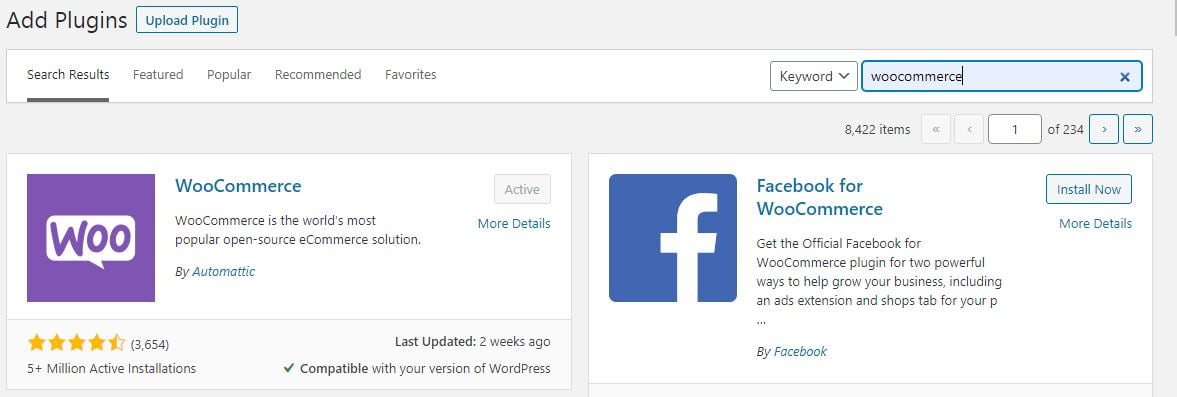
-> Configure Your Store Settings: Navigate to WooCommerce > Settings. Customize checkout process, account settings, and email notifications. Set up tax rates based on your business location and requirements. Configure shipping zones and delivery methods.
-> Select and Customize with a Ecommerce Plugin (WowStore): Choose a responsive pluginand theme optimized for e-commerce (Storefront is WooCommerce’s official theme). Customize your website colors, typography, and layout to match your shoe brand.
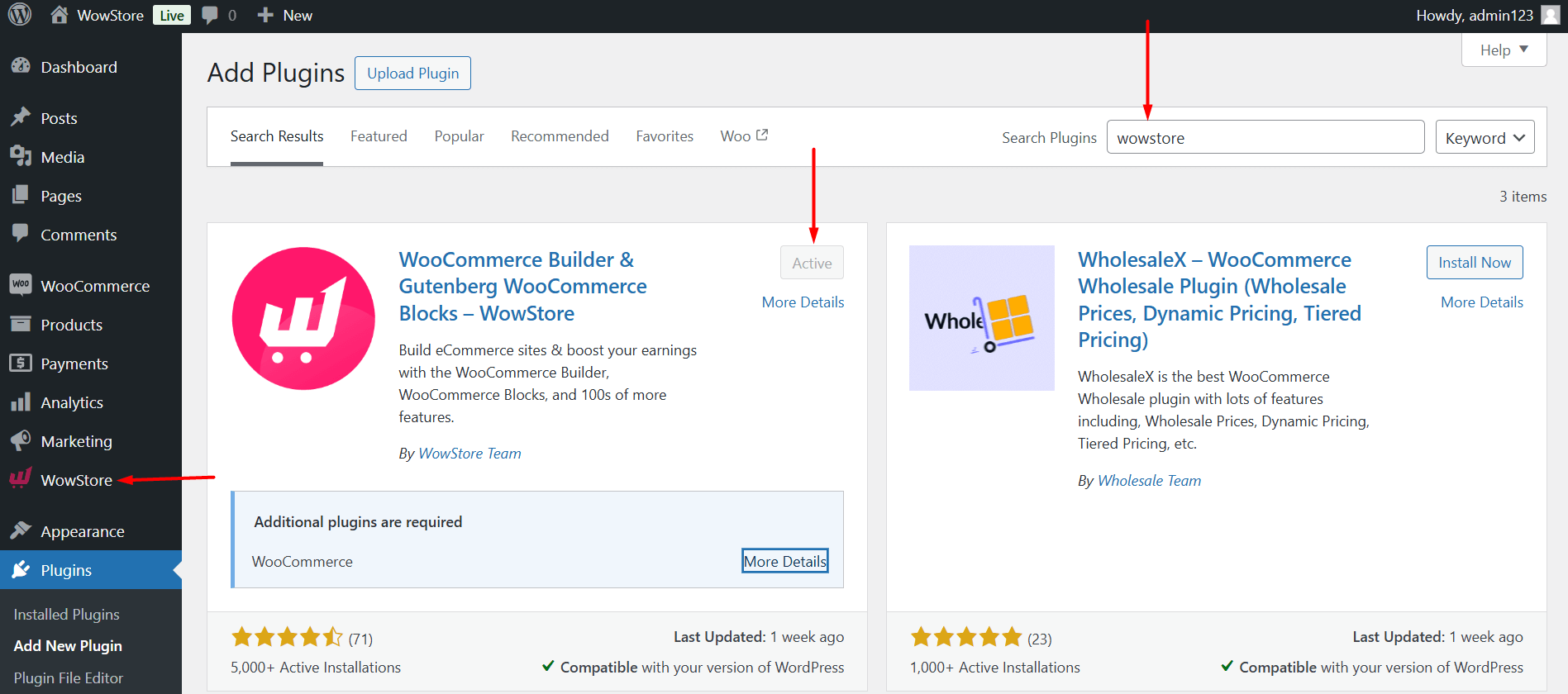
Why Choose WowStore for a Killer Online Store
Your digital storefront needs to shine and that’s where WowStore come in.
- Premade Templates: There are a bunch of tempaltes you can leverage if you use WowStore.
- Size guides: It provides build in size charts to have a very convenient sizing guides for efficienit shopping.
- Mobile optimization: Over 60% of online shopping happens on phones – WowStore make sure your site looks amazing on small screens!
- Customizable checkout Page: You can reduce friction by offering guest checkout and multiple payment options with the help of WowStore.

-> Set Up Payment Gateways: Enable multiple payment options (credit cards, PayPal, Apple Pay). Configure security settings and SSL certificate. Test the checkout process thoroughly before launch.
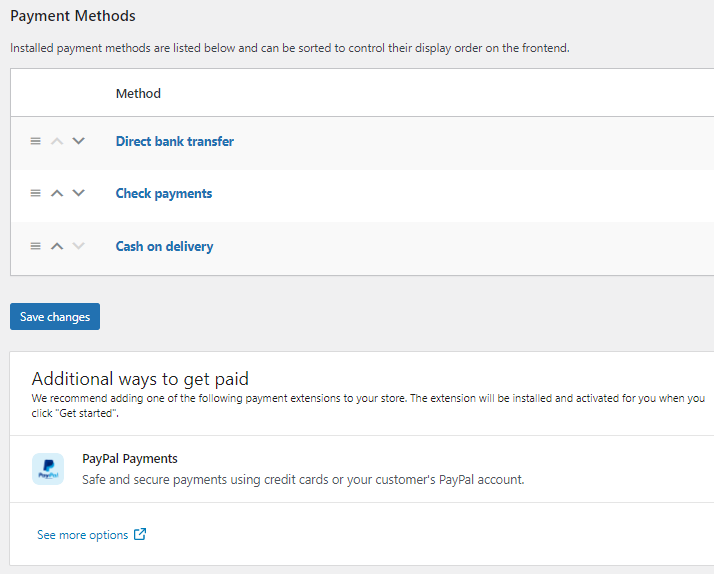
Step #5: Add Shoes as Products
Now that your WooCommerce store is set up, it’s time to add your shoe inventory:
-> Create Product Categories: Navigate to Products > Categories. Set up categories of your shoes (Men’s, Women’s, Athletic, Casual, etc.). Create subcategories for better organization if needed (Running, Basketball, Boots, Sandals)
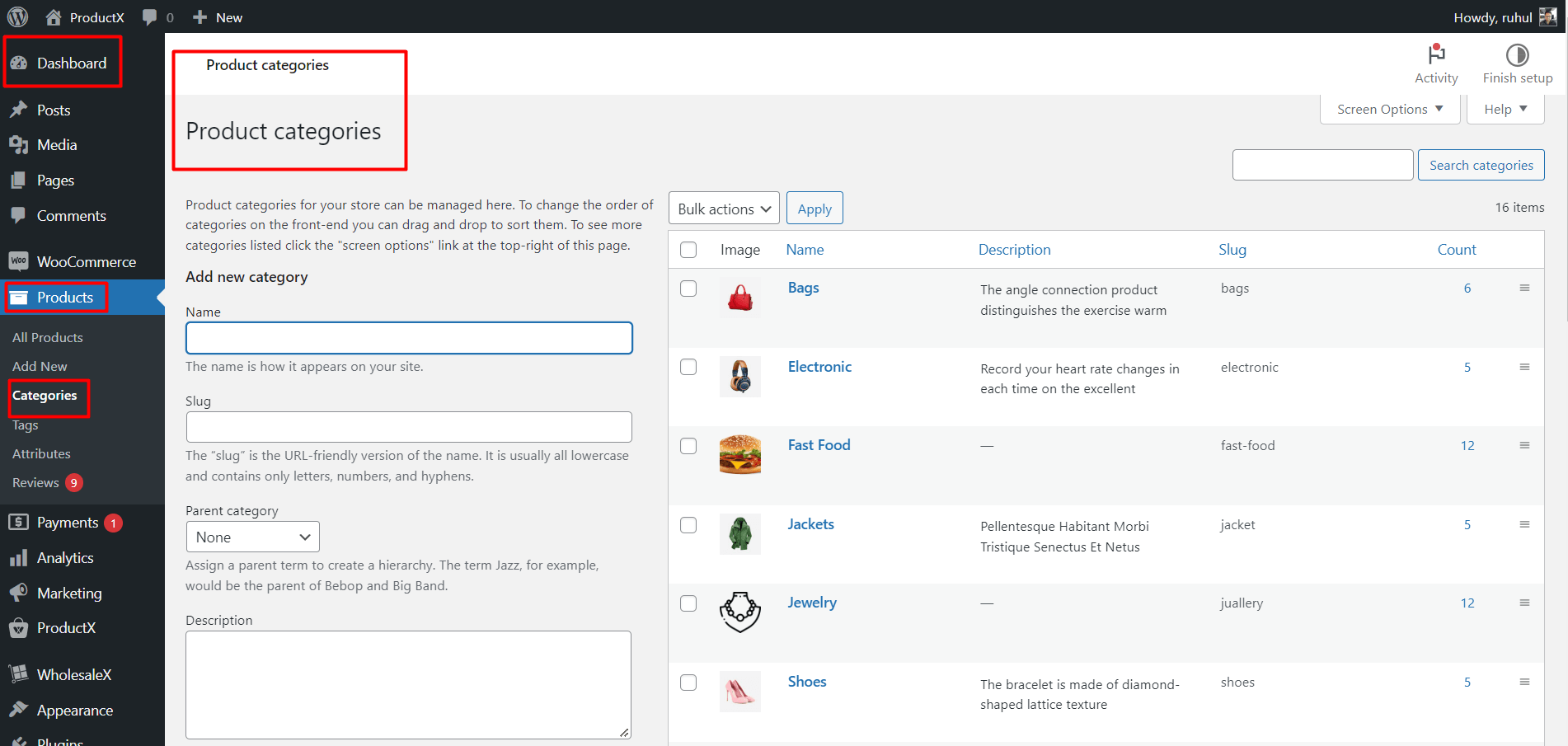
-> Add Individual Shoe Products: Go to Products > Add New. Enter complete product information: Descriptive product title, Detailed description highlighting comfort, materials, and unique features, Add product attributes like price, available sizes and more.
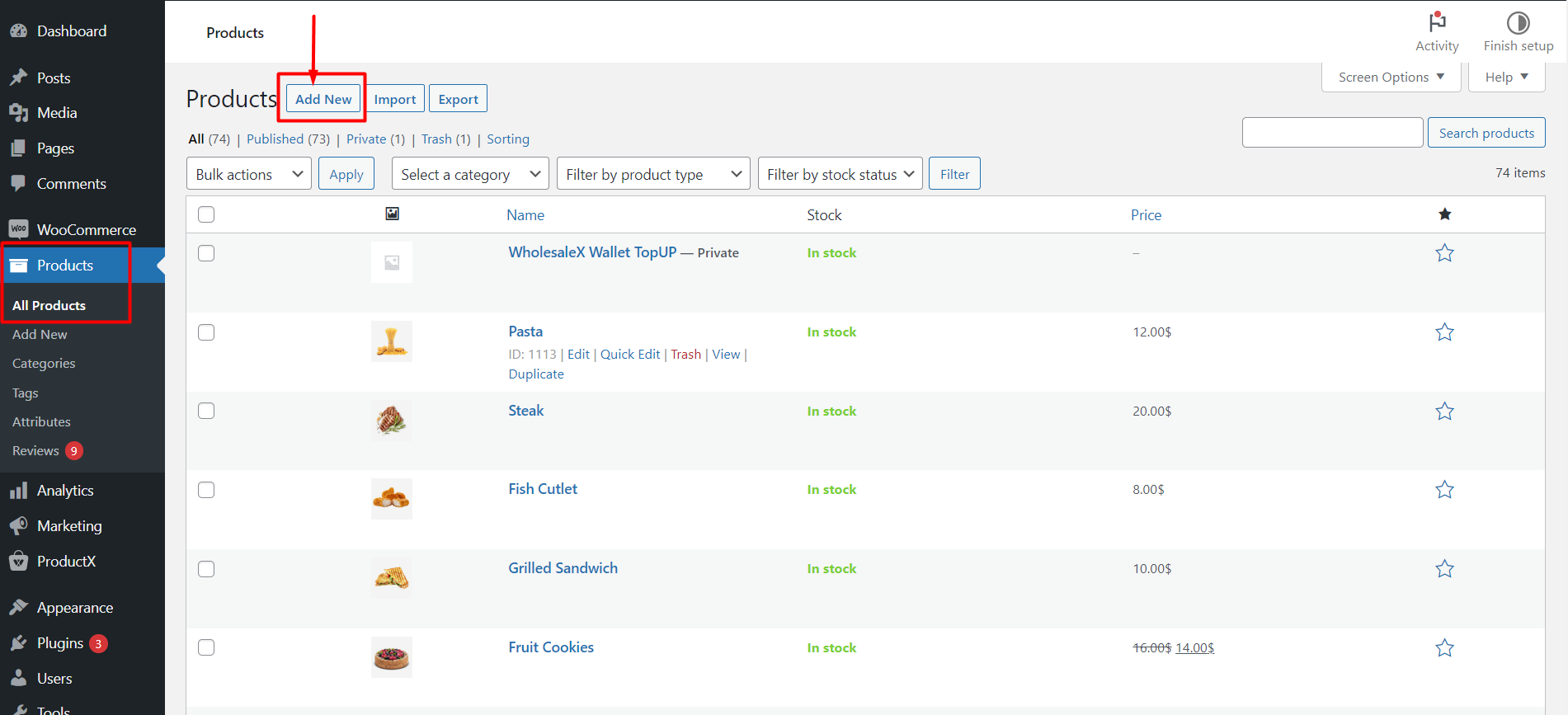
-> Upload High-Quality Images: Include multiple angles of each shoe. Use consistent lighting and backgrounds, add zoom functionality for detail viewing, consider 360° views for premium models.
-> Create Variable Products for Size/Color Options: Enable variations to let customers select their size and color. Manage inventory for each variation. Add different prices for special sizes if necessary

Step #6: Go for Organic Marketing
To get a competitive edge, you must go with organic marketing rather than paid marketing. In the long run, this strategy will help you get rapid growth. Here are some ideas:
Instagram is your best friend: Create a drool-worthy feed of shoe photos. Use relevant hashtags and partner with micro-influencers in your niche.
Email marketing: Build a list and send personalized recommendations based on previous purchases.
Content marketing: Create blog posts like “How to Break In Leather Boots” or “5 Ways to Style White Sneakers” to drive organic traffic.
Pinterest: Shoes are highly visual products that do exceptionally well on Pinterest, especially if you can create styling inspiration.
Your online shoe store is now taking shape with a solid foundation and product catalog. The next steps would involve implementing custom options for your shoes.
How to Enable Advanced Product Options (The Must Do!)
If you’ve been using WooCommerce, you’ve probably felt the frustration where you want to offer your customers more product customization choices, but the default just don’t allow it. You must give your customers the personalized shopping experience they crave.
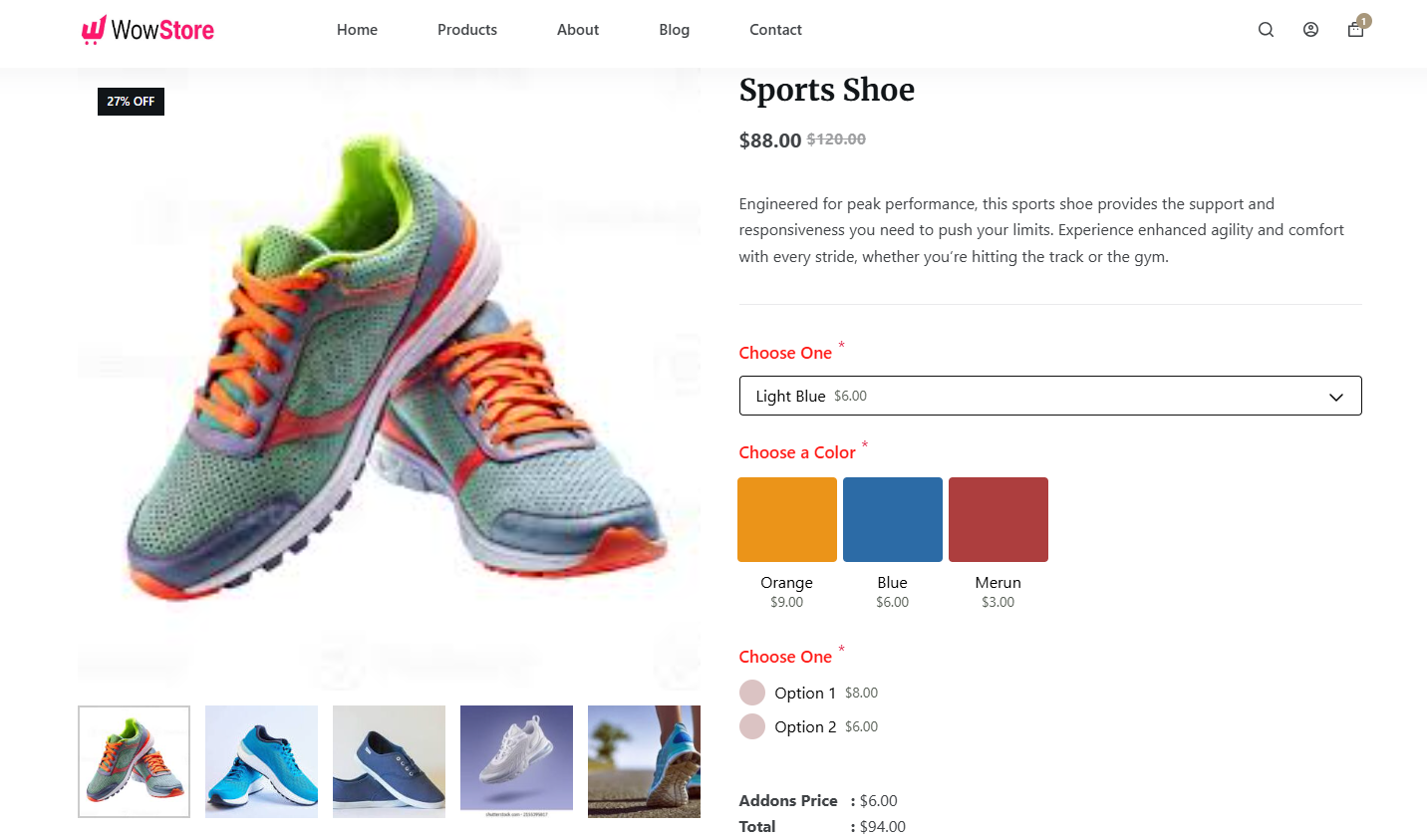
Let’s walk through how you can make your product pages super interactive and tailored for your customers. To get started, ensure that you have WowAddons installed and activated.
Once you’ve done that, go to your WordPress dashboard and click on WowAddons. Then, proceed to click on Create Addons. This will take you to the addon creation page. Now, you can start creating a custom product options by following these steps:
-> Select the products in the Assign Products settings. You can select All Shoes, Specific Shoe, or Specific Category based on your needs.
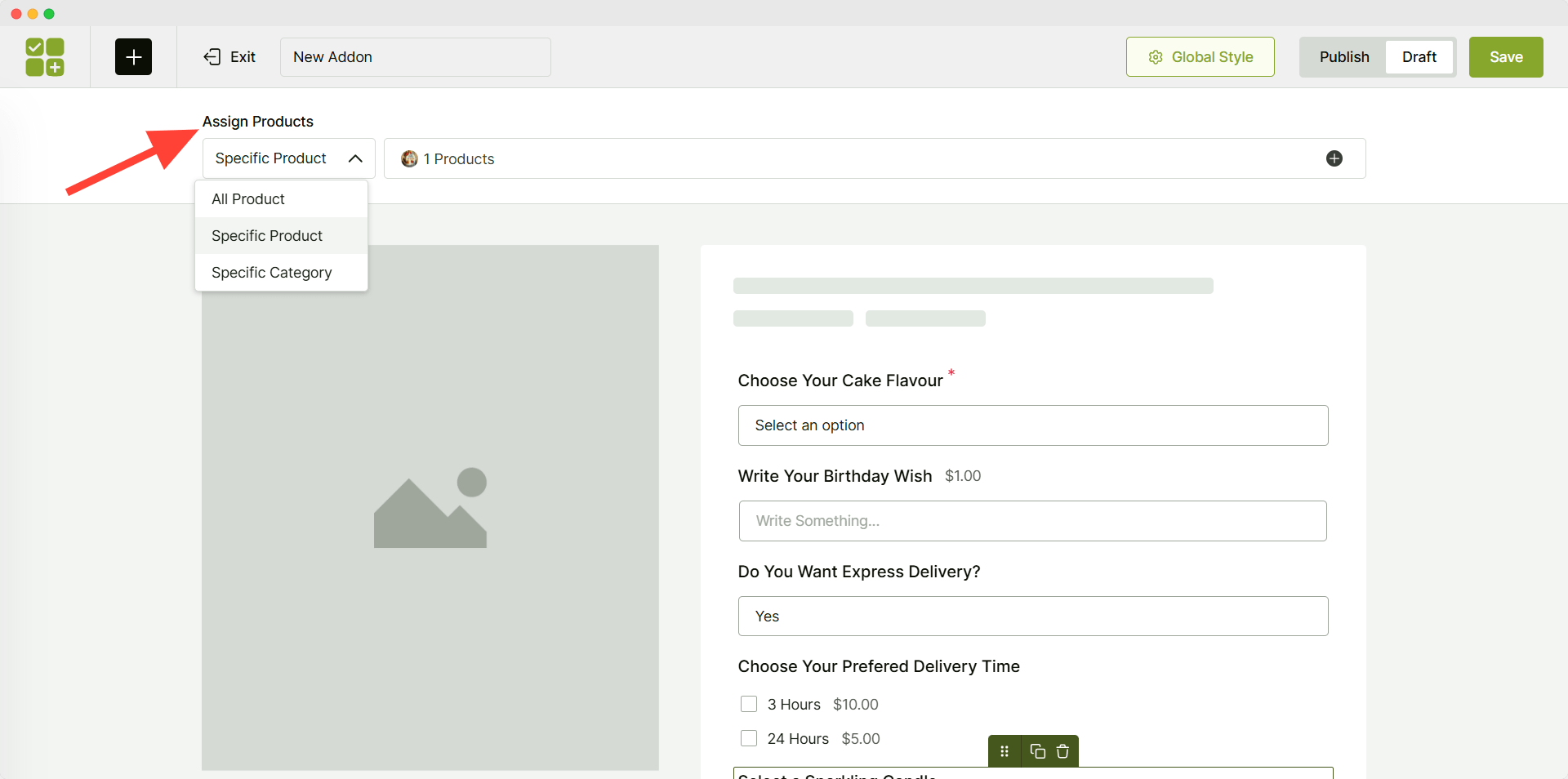
-> Next, add the desired product addons by clicking on the “+” icon. This will give you a list of 22+ product options provided by WowAddons.
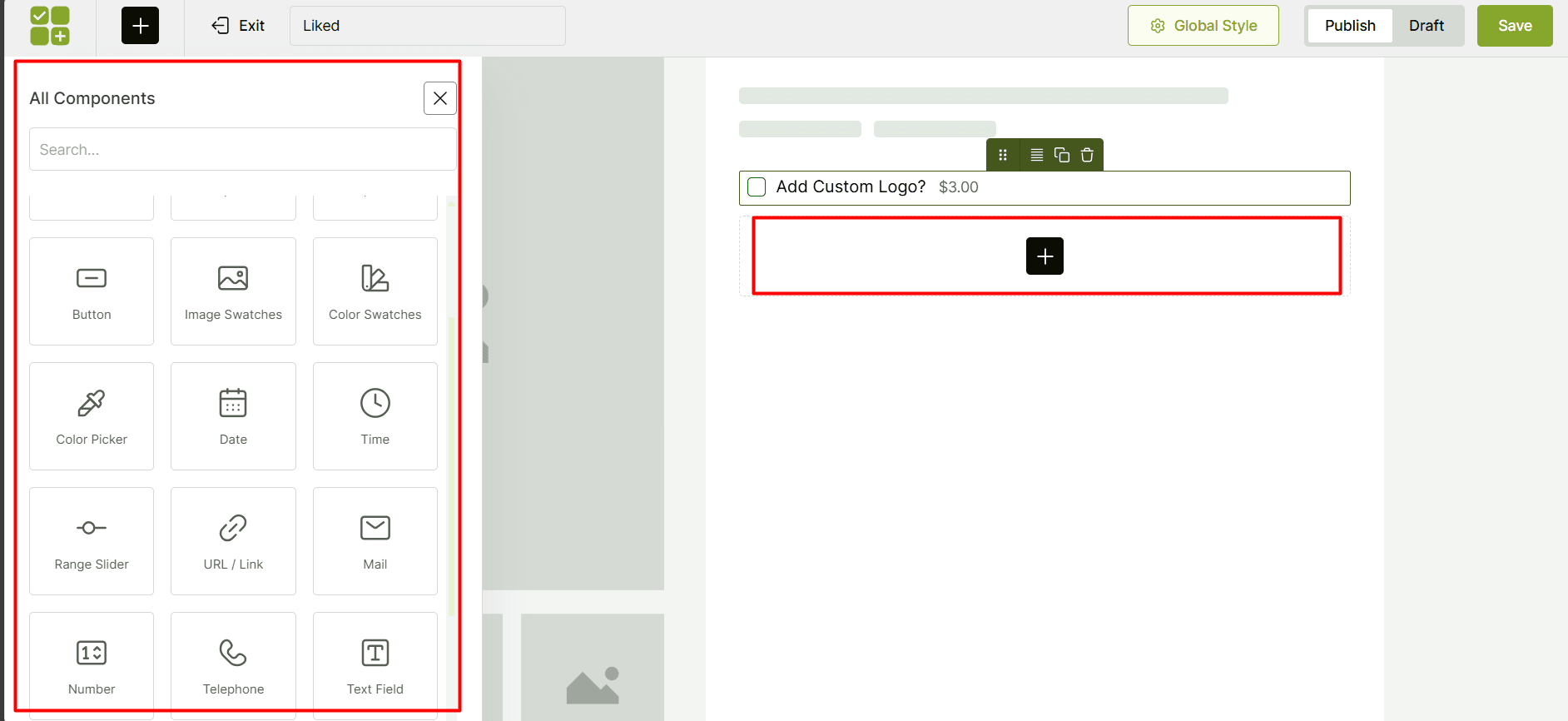
-> After adding an addon, you can customize its settings. You can even set conditional logic if needed. This lets you create dependencies between custom options.
-> If you want to change the default look for addons, you can use the Global Style settings.
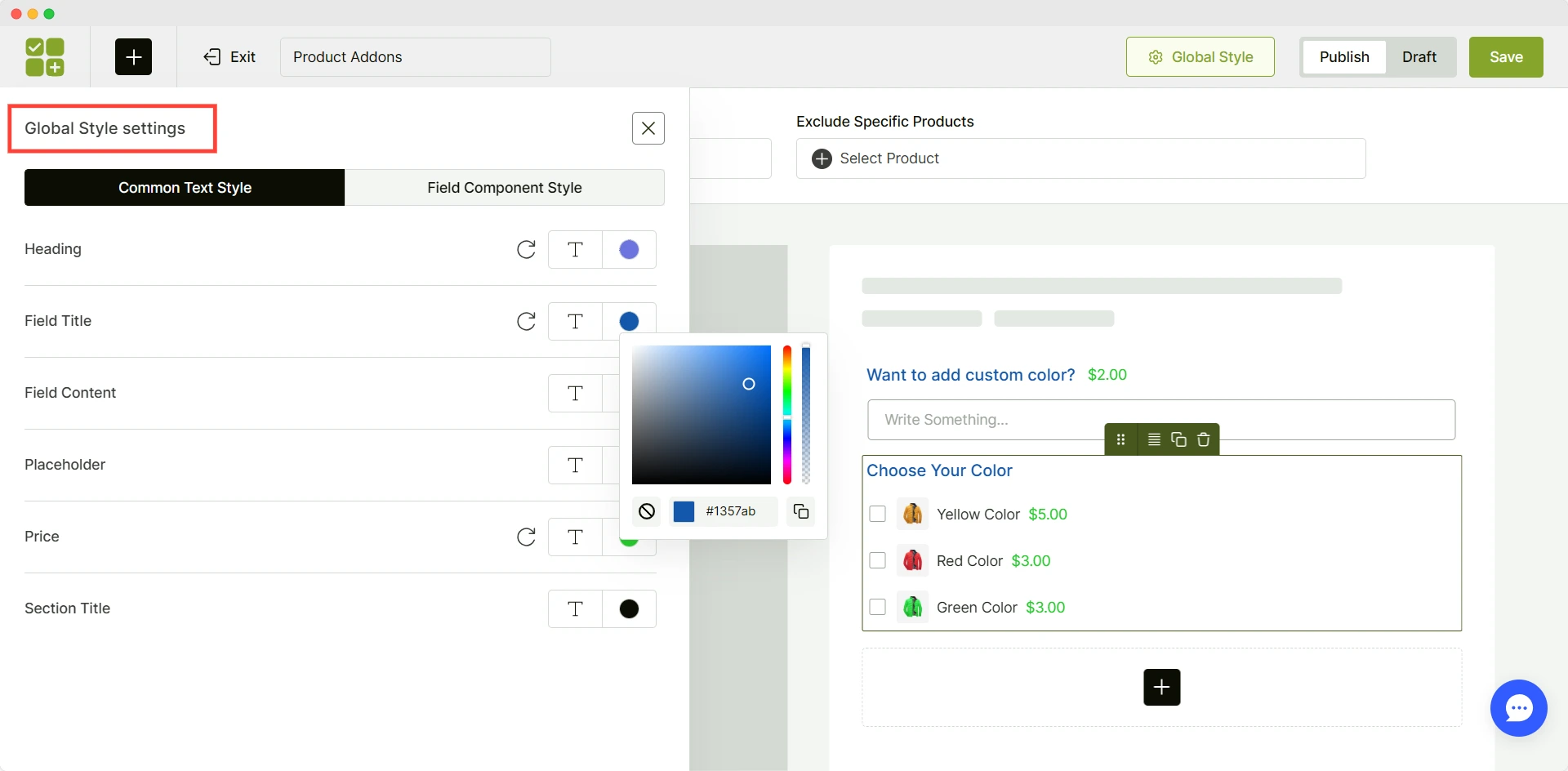
-> For advanced users who wish to have more control over styling or target specific fields with CSS or JavaScript, there’s an Advanced Settings section at the bottom of each field’s customization settings.
Once you’ve finished modifying the settings, click on the Save button to apply your changes. Also, ensure that the addon status is set to Publish.
Dropdown for Size Selection and Insole Options
First off, choose the Dropdown addons from the list and then add a dropdown option. Next, customize each option by adding images, prices, and more.
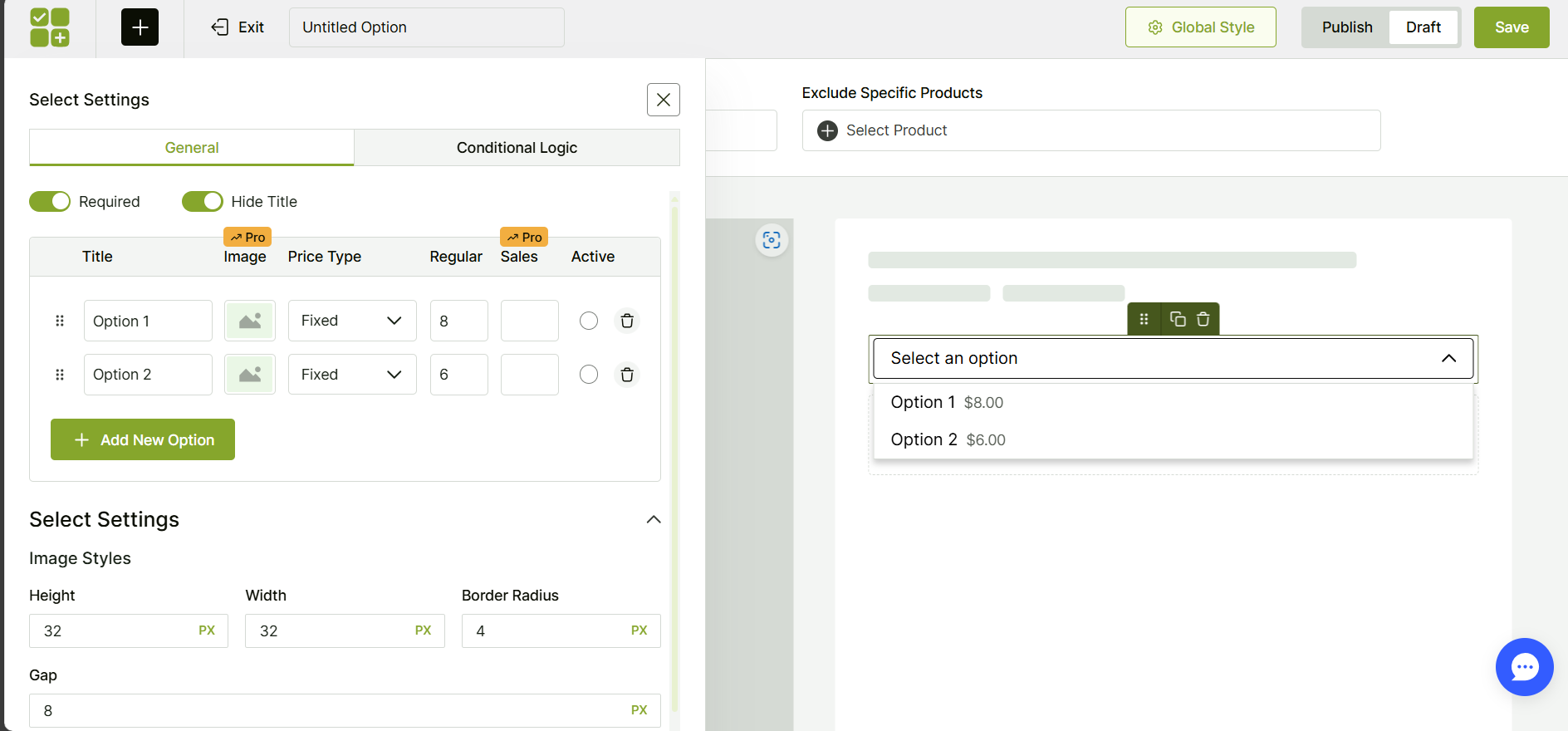
Color Swatches to Display Color Options
Select the color swatch addon, then set the color you want to offer your shoes to customers. Next, you can adjust the prices for each color option. You can also adjust the display style from here.
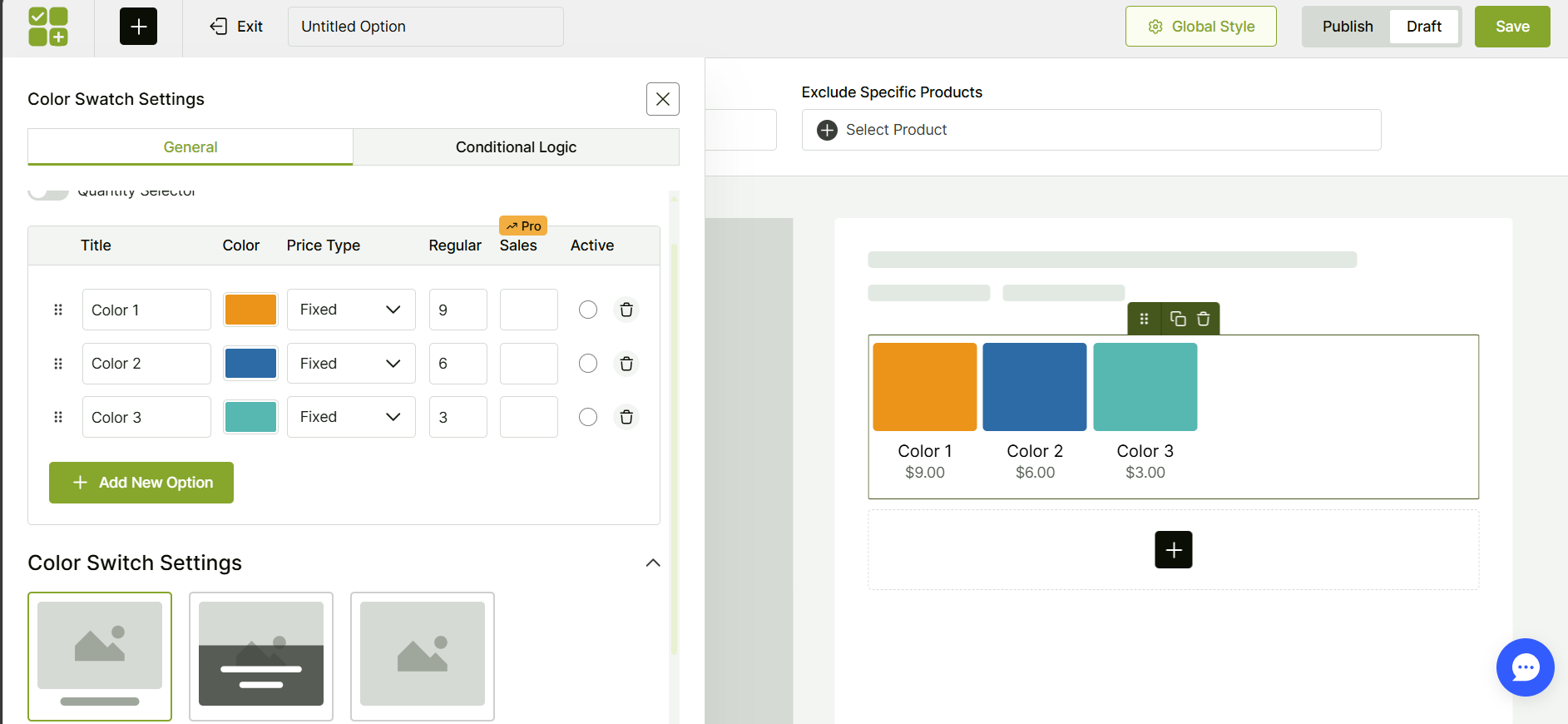
Radio Buttons for Lace Choices and Material Selector
Radio buttons are good for letting your customers choose the different types of shoe laces and insole options. For that, you first need to select the Radio element from the addons list. Next, set options and modify the display style, and set prices.
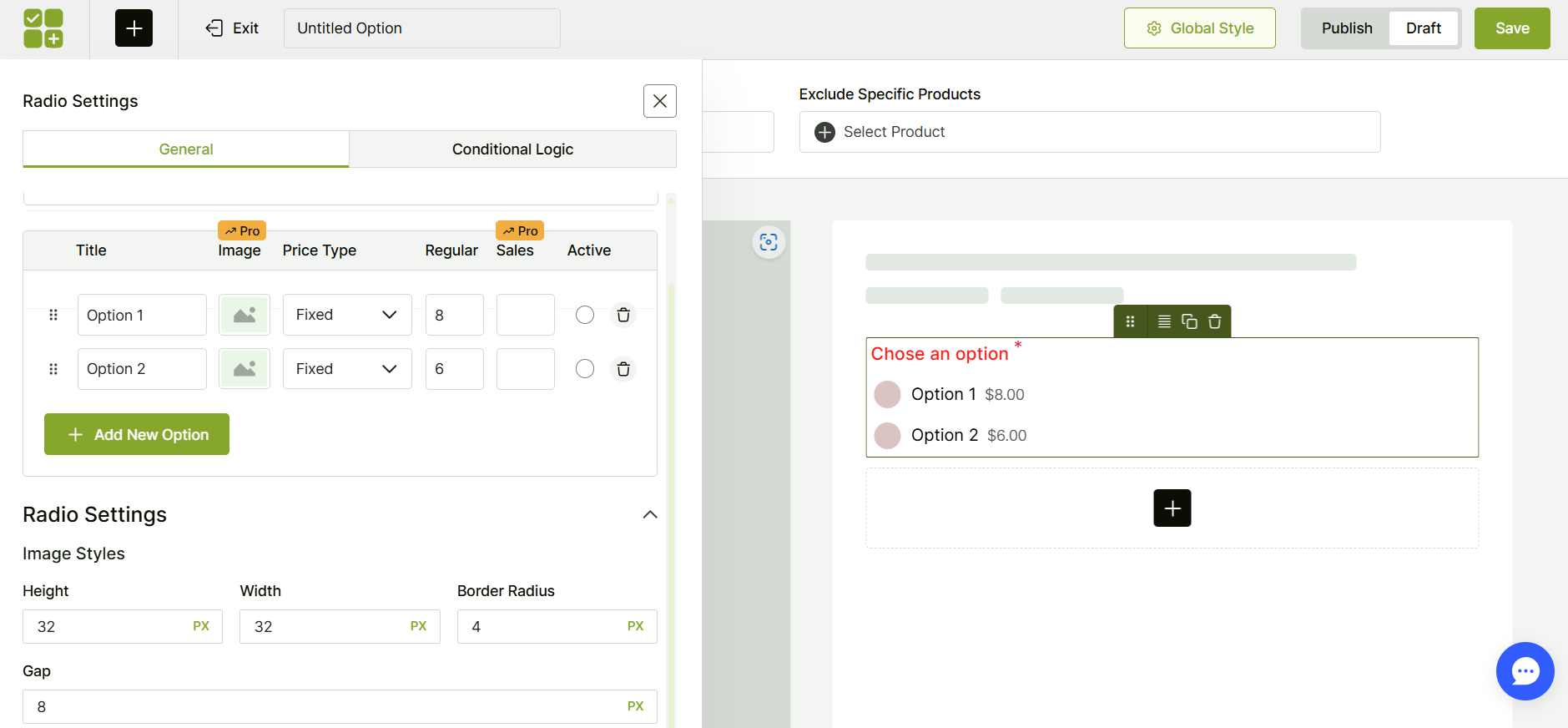
Color Picker for Custom Color Combinations
First, select the Color Picker element and drag it to the field section. Then, make this field required for users. You can also hide the title.
Next, set the default color and adjust the pricing for the option. You can change the fixed price, on a percentage, or offer this option for free.
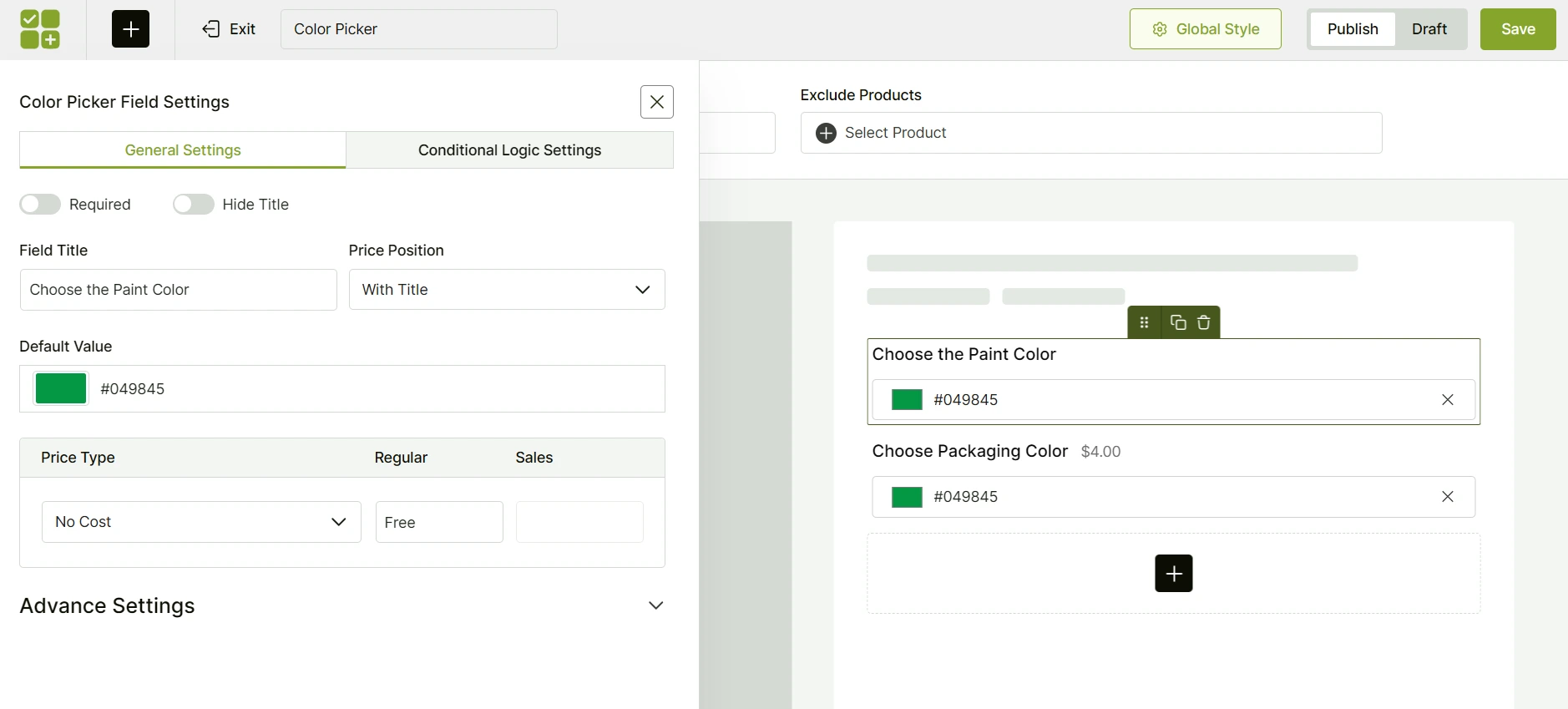
Product Field for Upsell and Cross-Sell
First, select the Product Fields addon and drag it to the field section. Then, make this field required for users. You can also hide the title.
Next, add the product you want to upsell or cross-sell. Enable quantity selector and change the display style in dropdown, checkbox, or image swatch.
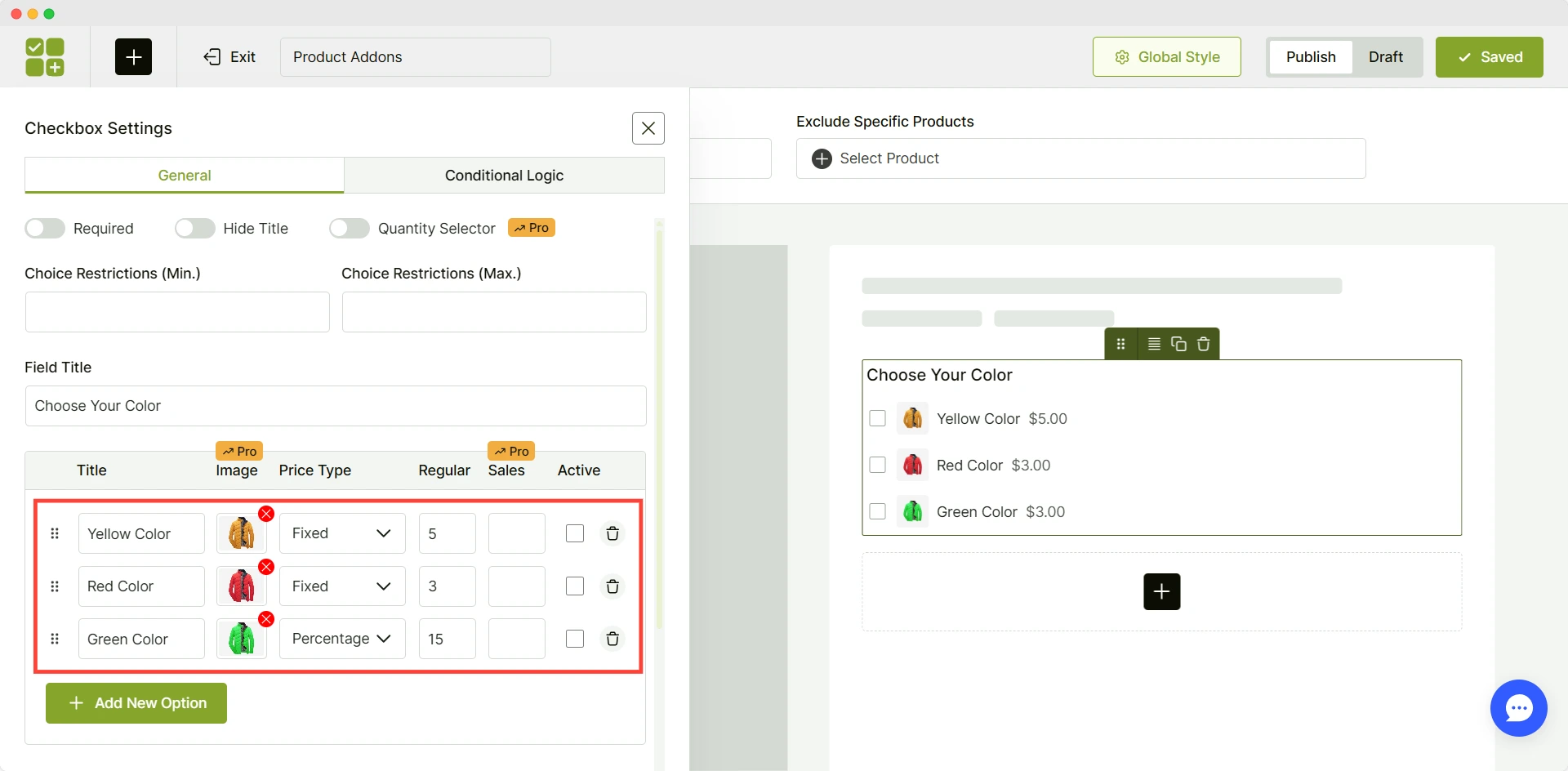
Real-World Benefits That Make a Difference
Let me share what this means for your business in practical terms:
- Higher average order values: When customers can create exactly what they want, they’re willing to pay more for it.
- Reduced customer service inquiries: Clear visualization and customization options mean fewer questions about what’s possible.
- Stand out from competitors: Offering personalization gives you an edge in crowded markets.
- Happier customers: People love products made just for them. It creates an emotional connection to your brand.
🔥Expert Hacks to Sell Shoes Online & Make Serious Money!
By implementing expert strategies, your online shoe store will create multiple opportunities to convert browsers into buyers. It also maximizes the value of each transaction. The combination of smart discounting, urgency tactics, and strategic promotions will drive serious revenue growth.
Use Powerful Discount Strategies
You must create an irresistible offer by implementing various types of discount campaigns. These will not just boost your sales but also make your store popular. You must strategically create:
- Strategic Bundles: “Buy shoes, get care kit half-off” or “Buy 2 pairs, get 3rd 50% off”
- Complete-the-Look: 15% off coordinated sets (shoes + matching accessories)
- Tiered Discounts: 10% (2 pairs), 15% (3 pairs), 20% (4+ pairs)
- Custom Packages: “Any 3 items for $X” across categories
- Smart Cross-Selling: Suggest complementary products with small bundled discounts
- Progress Indicators: Visual cues showing proximity to rewards like free shipping
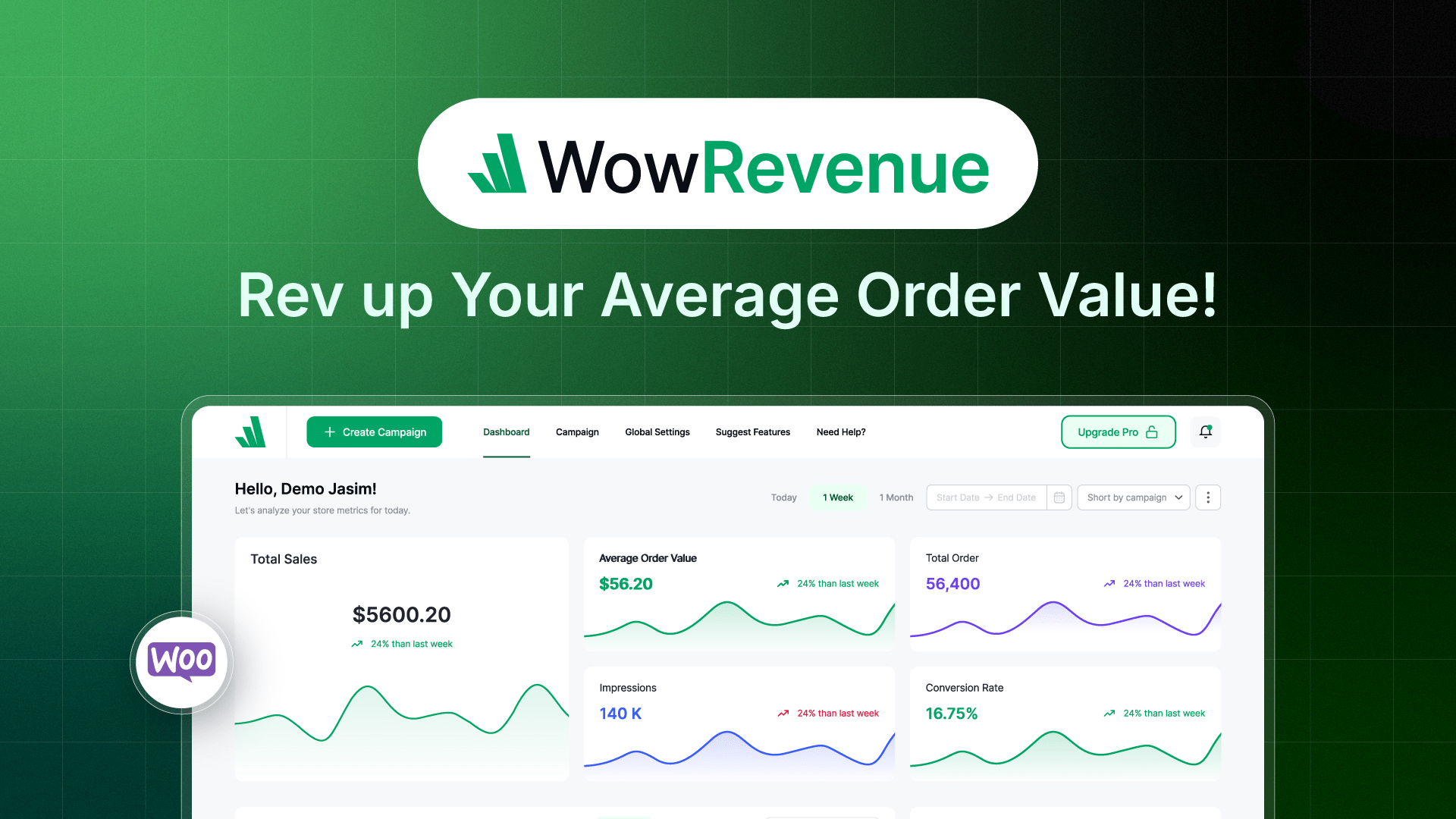
To seamlessly implement these, you need an intuitive and capable plugin like WowRevenue. This will help you create unique discount campaigns that no other plugins can do. Additionally, WowRevenue’s analytics pinpoint which strategies deliver the highest ROI for your specific inventory and customer base.
Apply FOMO and Urgency
FOMO (fear of missing out) urgency are the two psychological factors that drives people to buy unconditionally. These visual cues prompt quicker purchasing decisions and reduce cart abandonment. And WowRevenue also help you implemet these.
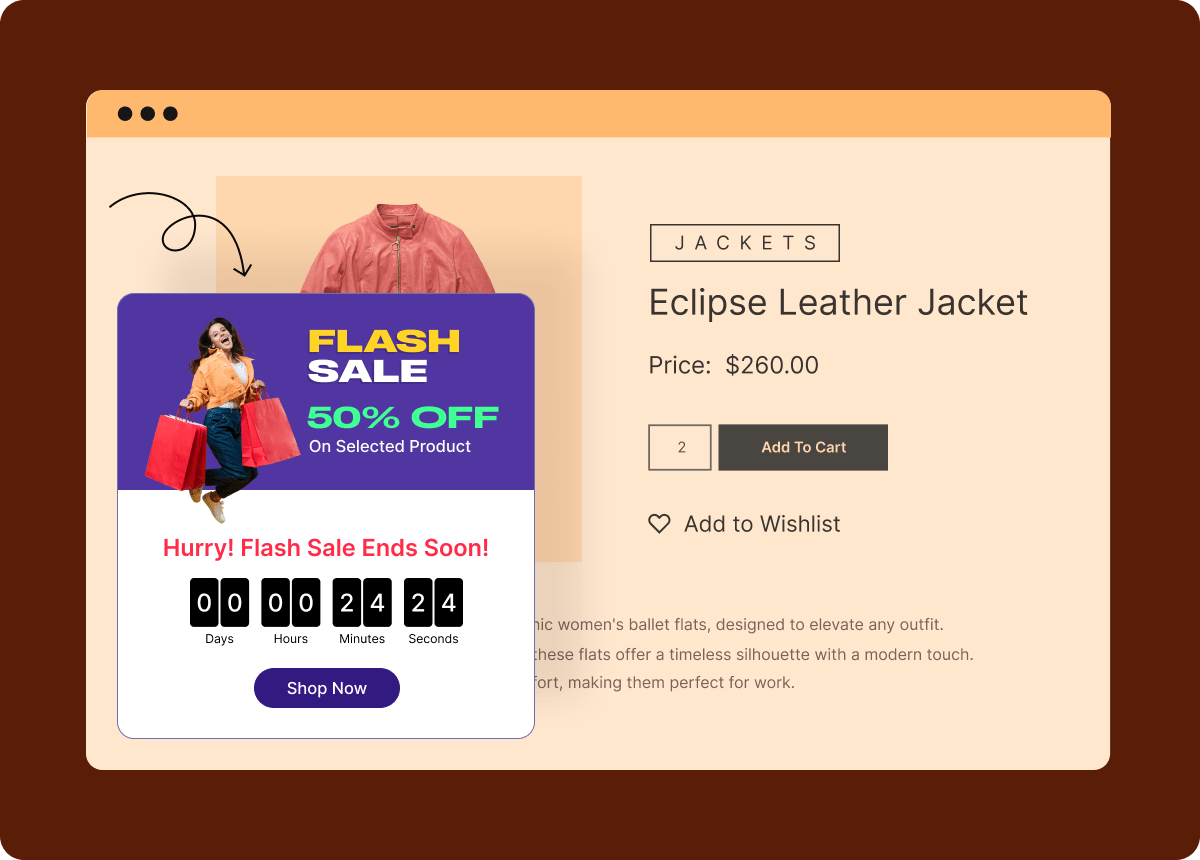
Add dynamic countdown timers to limited-time promotions: “Flash Sale: 30% Off All Shoes – Ends in 30 minutes.” You can also display real-time inventory levels on popular styles: “Only 3 left in size 8!” This creates authentic urgency while preventing customer disappointment when items sell out.
Customer Service That Creates Fans
In this modern era, customers prefer services even more than the actual product. So to be at the top of mind, you must offer exceptional customer support and after-sales services. Because happy customers become repeat buyers.
Clear return policy: Shoes have to fit perfectly, so make your return process painless.
Fast shipping: Consider free shipping thresholds to encourage larger orders.
Personal touches: Include handwritten thank-you notes or small gifts with purchases.
Follow-up emails: Check in after purchase to ensure satisfaction and request reviews.
Display Banners and Popups
Deploy strategic popups and banners tied to seasonal events or flash sale promotions. Such as “Summer Sandal Blowout: Buy One, Get One 50% Off – This Weekend Only!” and “48-HOUR SALE: 25% OFF ALL SNEAKERS!”
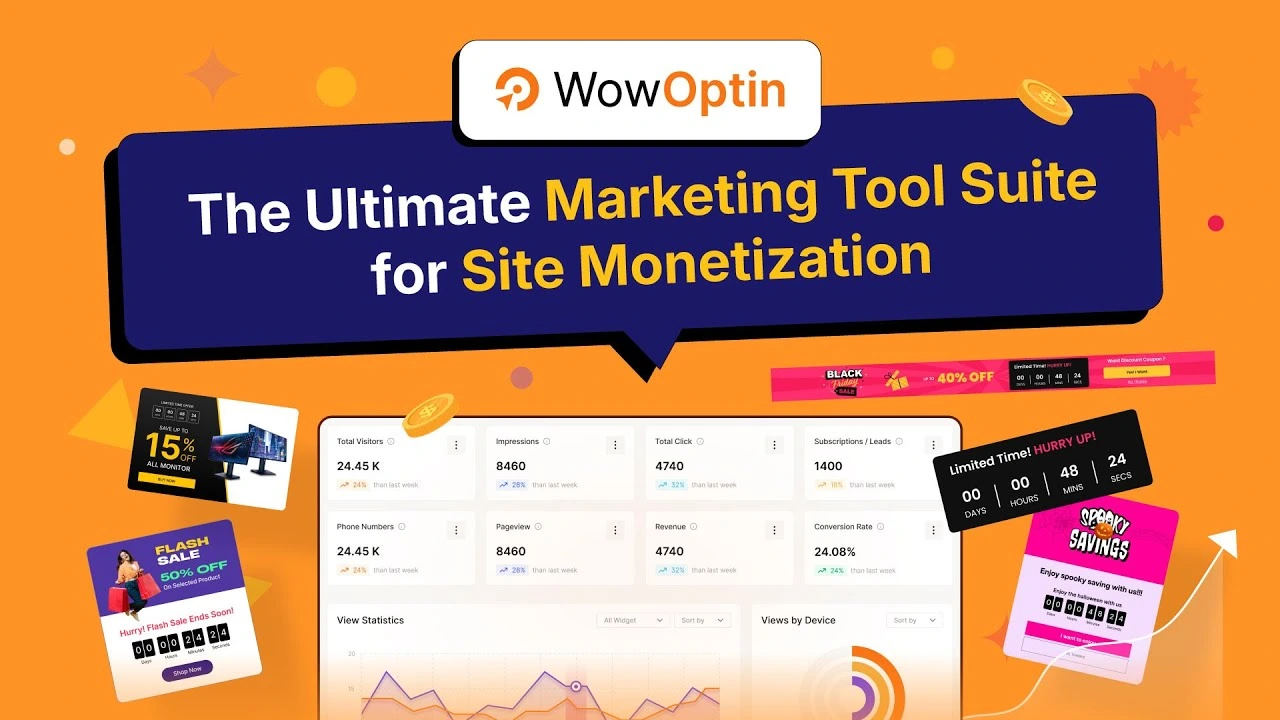
But creating these can be frustrating, if you go with the wrong tools. You need a modern intuitive plugin with lots of premade tempalates and that’s what WowOptin offers. You can leran more about this plugin from here [Click Here].
Quality Control Tips
No matter which sourcing method you choose, quality control is essential. To ensure you get the best possible inventory for your online shoe store, you must follow these:
- Always order samples before stocking up
- Read supplier reviews thoroughly
- Start with smaller orders to test the quality
- Create a clear returns policy with your suppliers
- Regularly check products you receive against your quality standards
Use Tools That Save Time
You need to work smarter, not harder. With these tools, you will not only save time but also bring products and services faster to the customers:
Inventory management software: Systems like Zoho Inventory or Shopify’s built-in tools can prevent overselling.
Social media schedulers: Use Buffer or Hootsuite to plan content in advance.
Email automation: Set up welcome sequences and abandoned cart emails with Klaviyo or Mailchimp.
Analytics: Use Google Analytics and your platform’s native tools to understand customer behavior.
Common Beginner Mistakes to Avoid
Save yourself time, money, and headaches by avoiding these pitfalls:
- Overstocking inventory: Start small and test styles before buying in bulk
- Ignoring seasonality: Plan inventory around peak buying seasons
- Poor product descriptions: Include ALL details (materials, care instructions, exact measurements)
- Weak return policy: A generous policy actually increases overall purchases
- Trying to compete on price alone: Compete on niche expertise, curation, or customer experience instead
- Insufficient photography: Customers need to see exactly what they’re getting.
- Poor inventory management: Nothing frustrates customers like ordering shoes that are out of stock.
- Neglecting mobile users: Make sure your site works perfectly on smartphones.
Ready to Step into Online Shoe Sales?
Starting an online shoe store definitely has its bumpy moments, but hey, who doesn’t love a good challenge? The secret sauce to success is really about making your customers feel special from the moment they visit the “shoe” to when they’re tearing open that package with excitement.
To achieve this seamlessly, you can utilize the following plugins:
- WooCommerce turns your WordPress site into a selling machine
- WowStore gives you that sleek, professional look shoppers trust
- WowAddons lets customers customize their perfect pair of shoes
- WowRevenue helps you create those irresistible “buy one, get one” deals
- WowOptin catches attention with eye-catching promotions that convert browsers to buyers
Remember this golden rule: when someone has an amazing experience buying their first pair from you, they’re already mentally shopping for their next! It’s like that favorite coffee shop you keep going back to because they make you feel valued.
Good luck with your online shoe venture!
🧠FAQs about Selling Shoes Online
You may have additional queries about selling shoes online. Here are some of them I’ve answered.
What to say to sell a shoe?
Highlight the shoe’s comfort, style, and quality: Such as, These shoes combine modern style with all-day comfort, perfect for any occasion.
Emphasize unique features: Engineered with breathable material and cushioned soles for superior support.
Use social proof: “This is one of our best-selling models, highly rated by customers for durability.”
Offer genuine flattery and address the customer’s needs: “This design would look great on you and matches your active lifestyle
Is selling shoes profitable?
Yes, selling shoes can be profitable. Established shoe retailers and online sellers typically achieve profit margins between 20% and 40%, with monthly revenues ranging from $10,000 to $50,000 for successful operations.
However, profitability depends on strategy, inventory management, and market competition.
What shoe size is most profitable?
— For sneaker reselling, both the most common and the rarest sizes can be highly profitable:
— Smaller sizes (US 4–7.5) and larger sizes (US 13+) often yield higher resale prices due to limited production and higher demand among niche buyers.
— For general retail, mid-range sizes (US 9–12 for men, US 7–9.5 for women) are the most consistent sellers and move faster, but may not always have the highest markup
What is the profit margin on shoes?
For sneaker reselling, both the most common and the rarest sizes can be highly profitable:
— Smaller sizes (US 4–7.5) and larger sizes (US 13+) often yield higher resale prices due to limited production and higher demand among niche buyers.
— For general retail, mid-range sizes (US 9–12 for men, US 7–9.5 for women) are the most consistent sellers and move faster, but may not always have the highest markup.
What’s the most sold shoe size?
— For men, US sizes 9–12 are the most sold and fastest moving.
— For women, US sizes 7–9.5 are the most popular.
These sizes represent the highest demand and are typically stocked in greater quantities by retailers.

